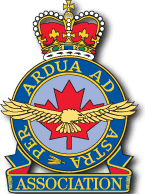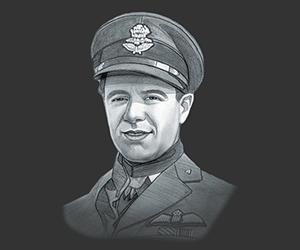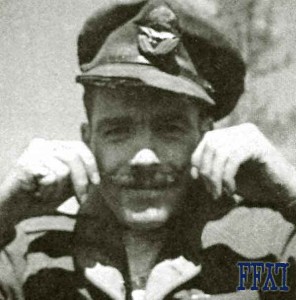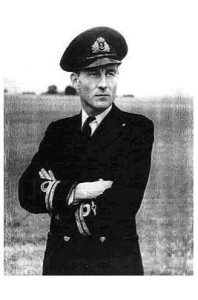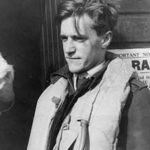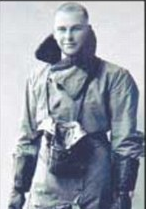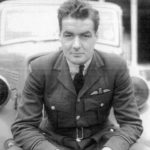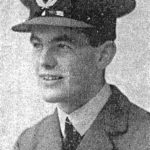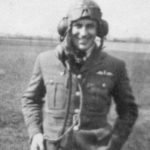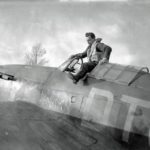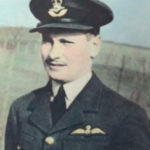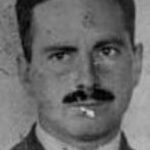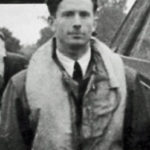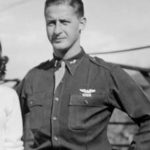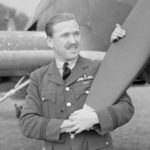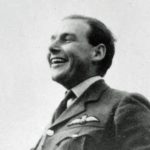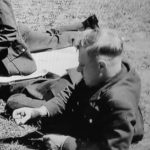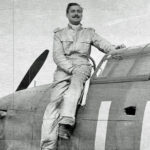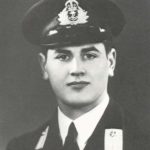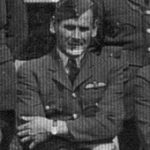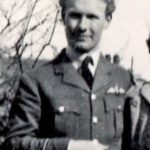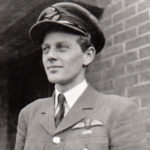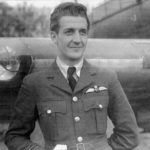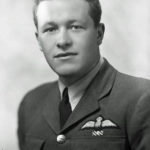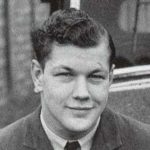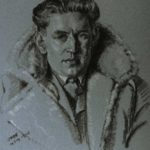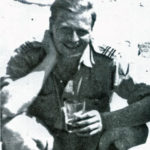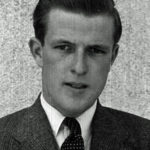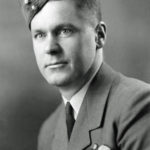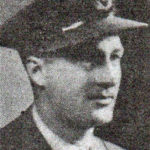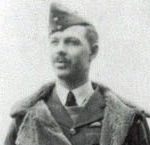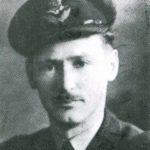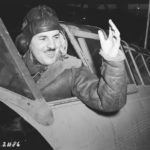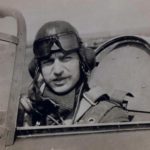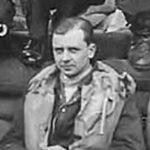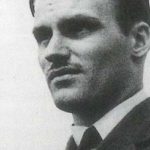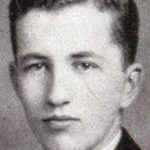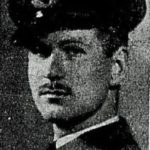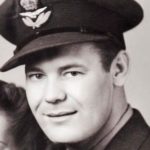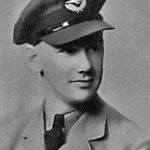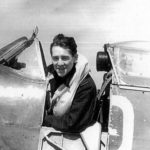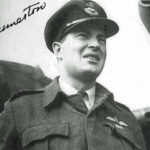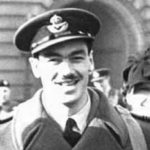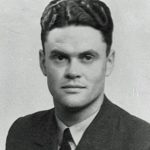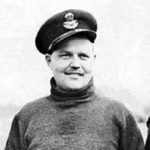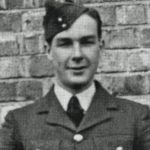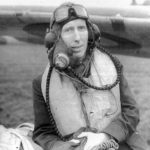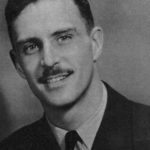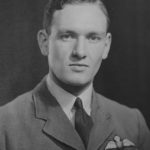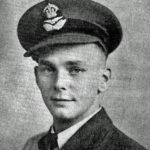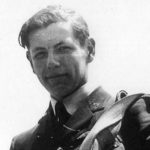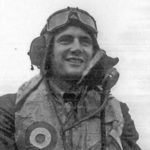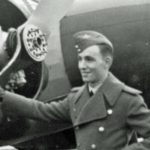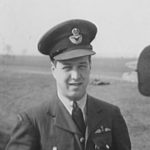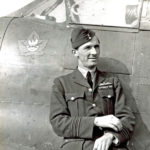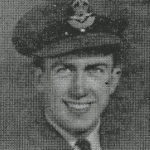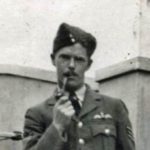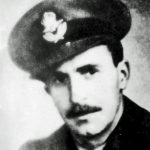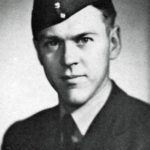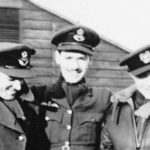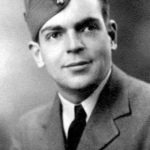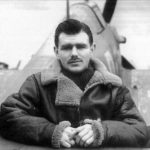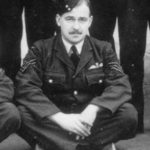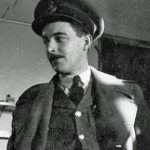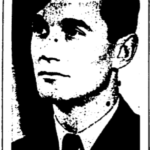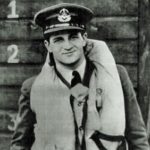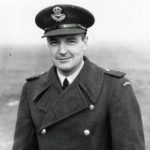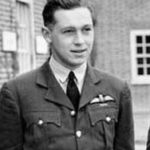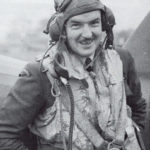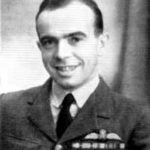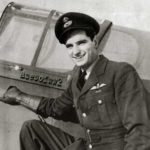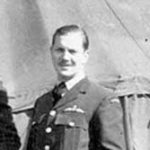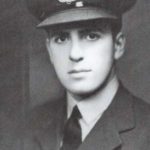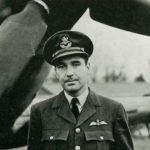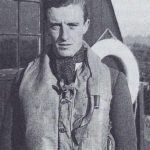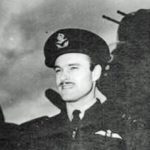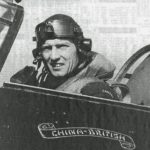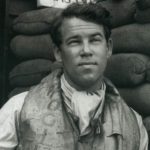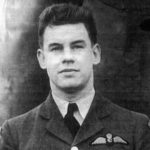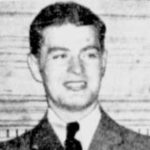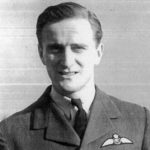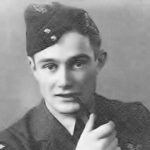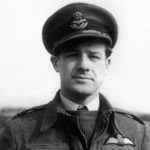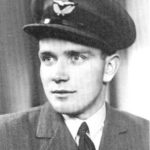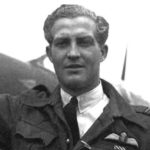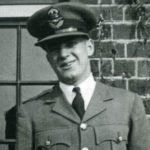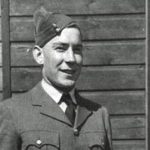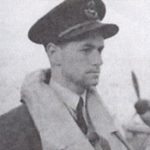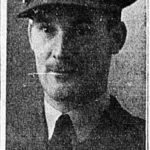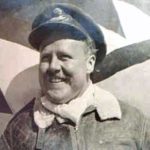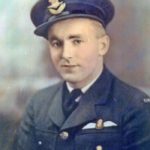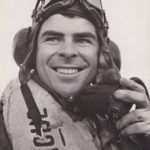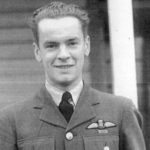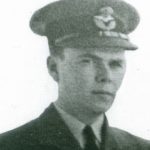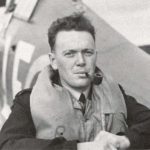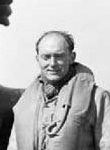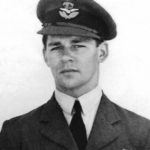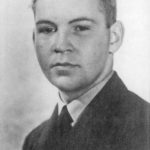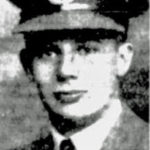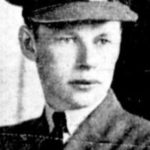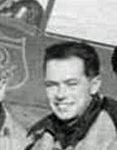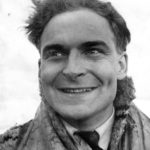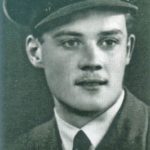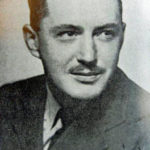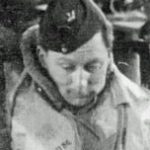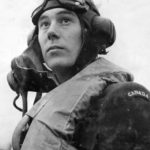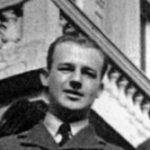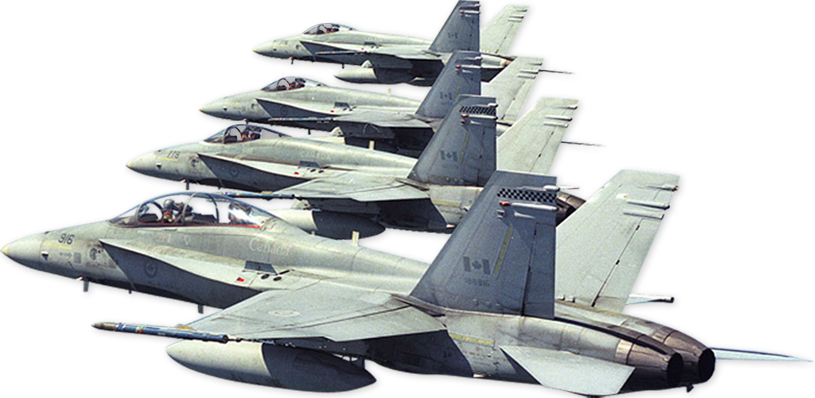The RCAF Association acknowledges the research done by the renowned RCAF historian, Hugh Halliday, in compiling the information presented below as well as The Battle of Britain London Monument Website. These are the 117 Canadians who fought in the Battle of Britain 10 July-31 October 1940:
-
90128 Flight Lieutenant (F/Lt) John William Maxwell “Max” AITKEN, DSO, DFC, 601 Squadron. Born in Montreal 15 February 2010. On 16 May 1940, he flew to France with the Hurricanes of “A” Flight to reinforce 3 Squadron. He was quite successful being involved in the destruction of six enemy aircraft. He returned to England as an acting Squadron Leader (S/Ldr) and took command of 601 Squadron and destroyed a He111 25 June 1940. For this and for his victories in France he was awarded the DFC 9 July 1940. On 25 June 1941, flying a Spitfire he shot down a Me109 in a sweep over France. Commanding 68 Squadron flying Blenheims as a night-fighter unit with mainly Czech crews. He shot down a Do17 on the night of 30 April and another on the night of 29/30 May and on the night of 23/24 shot down a Ju 88 and a Do217. He was awarded the DSO and the Czech Military Cross. His operational tour complete, he was posted in February 1943 to HQ Eastern Mediterranean in the Fighter Tactics Branch. On 05 March, 1944 flying in a Beaufighter of 46 Squadron he shot down two Ju52s, probably a third and damaged a fourth. His victories now totaled 14. He retired in 1946 as a Group Captain (Gp Capt). He died 01 May 1985. The RAF Museum at Tangmere has in its collection the flying boots Max Aitken wore in 1940 when at RAF Tangmere. It is said that when off duty and frequenting a public house in Bognor Regis, Max Aitken was unable to pay his bill and left his flying boots behind as payment. Many years later, the landlord of the White Horse Public House, Bognor Regis gifted the boots to the Museum. MAX AITKEN’S FLYING BOOTS ARE DISPLAYED IN THE MUSEUM’S BATTLE OF BRITAIN HALL. For more information see link here.
-
41241 Flying Officer (F/O) Charles Ian Rose “Duke” ARTHUR, 141 Squadron. From Fort Garry, Manitoba. 01 Jun 1943 as a F/Lt he took command of 232 Squadron in Tunisia until 25 Dec and then commanded 72 Squadron at Lagos, Italy. He destroyed a Me 109 on 07 May and was awarded the DFC 9 June 1944. He took the squadron to Sisteron, France to cover the landings and returned to Italy on 02 Oct. He was promoted to acting W/Com and awarded a bar to his DFC. He left the RAF as a W/Com on 03 November 1954 and returned to Canada. ARTHUR — Charles Ian Rose born June 4, 1918 passed away 13 October 1998, at Richmond Lions Manor. He is survived by his cousin Dorothy-Ann PATRICK, daughter-in-law Mary-Lynne BLOW; two grandsons Tad (Kim) and Jason; two great-grandchildren Amber and Nash; other MURPHY cousins and many friends. “Duke” was a Wing Commander (WComd) in the R.A.F. with DFC and Bar, and flew during the Battle of Britain.
-
Lieutenant (Lt) (FAA) Roy BAKER-FALKNER, 600 Squadron. At the end of August 1940 when there was an urgent need for pilots, the call went out to the Navy, Coastal Command and Bomber Command Roy was one of these. He rose to the rank of LCdr DSO, DSC and was killed after flying off the Aircraft Carrier HMS Furious 18 June 1944. Roy Sydney Baker-Falkner was born on 3rd June 1916 in Nottingham, England; his father was stationed in Britain with the 79th Battalion Canadian Expeditionary Force. The family returned to Canada in early 1918, eventually moving to Saanich on Vancouver Island, British Columbia, to be close to their cousin, a magistrate at Steveston near Vancouver. In mid 1929, Baker-Falkner applied to join the Navy at Esquimalt naval base, British Columbia. As the Royal Naval College of Canada at Esquimalt had closed eight years previously, he was transferred to the United Kingdom on a Canadian Commonwealth Scholarship. Along with other RCN cadets, he enrolled for officer training at the Royal Naval College at Dartmouth. In 1934, as a midshipman, he was appointed to HMS Kent, flagship of the China Fleet. In 1937 he transferred to the Royal Navy Fleet Air Arm as a pilot, completing his pilot training with the Royal Air Force. Baker-Falkner earned his pilot’s wings in 1938 with the rank of Sub-Lieutenant RN/Flight Lieutenant RAF, and specialized in torpedo reconnaissance. He was appointed to an operational carrier-based squadron in HMS Glorious in the Mediterranean. On the outbreak of war in September 1939, his Fairey Swordfish squadron was actively involved in the search for the German warship Graf Spee in the Indian Ocean. Baker-Falkner returned to England in spring 1940, and was seconded to a shore-based squadron where he supported the evacuation of troops from Dunkirk and later participated in the Battle of Britain. He was one of the few Canadian naval officers to participate in this battle. He then was seconded to RAF Coastal Command, flying the venerable Swordfish biplane in mining missions against the German coastline. For his actions he was awarded the Distinguished Service Cross. After 15 months of operational duties, in August 1941 Baker-Falkner was attached as a pilot instructor to the Fleet Air Arm air station at RNAS Condor in Arbroath, Scotland, at which time he took part in the Royal Navy information film “Find, Fix and Strike”. He was appointed as commanding officer of 767 squadron in August 1942. Subsequently in October 1942 he was appointed to the Royal Navy aircraft testing squadron at RAF Boscombe Down as a test pilot, and proved instrumental in testing naval aircraft prior to their operational use by the Royal Navy. Chief amongst these was the dive-bomber, the Fairey Barracuda. Based on his unique skills with the Barracuda, he was given command of 827 squadron in August 1943, the first Royal Navy unit equipped with this advanced dive-bomber.
-
37664 F/Lt. Robert A. BARTON, DFC 249 Squadron. Born in Kamloops, 07 June 1916. Joined 41 Squadron 11 October 1936 and remained until posted as a Flight Commander to 249 Squadron on its formation on 16 May 1940. On 15 August, he shot down a Me110 and a Me109 destroyed on the 24th. On 15 September, a Do17 destroyed. On the 2nd a Me 110 destroyed, a Me109 destroyed on 19 October and a bomber shot down into the sea. 11 November. Awarded the DFC 20 October 1940. On convoy patrol on 04 Feb, 1941 he destroyed a Me110; his final victories in the UK. In mid April the Squadron was equipped with Hurricanes Mk,IIs armed with 20mm cannon and in early May sailed from Liverpool on the carrier HMS Furious to Gibraltar. There the Squadron was transferred to the aircraft carrier HMS Ark Royal on 21 May bound for Malta. They all arrived there safely. The squadron was quite successful with Barton destroying a SM79 03 June 1941; a BR20 on 08 June; a Me200 on 17 July; another on the 25th and a Me202 on 22 November. A bar to his DFC (31 October 1941) and posted away for a rest 08 December. He flew a few Mustang sorties in 1945 and was made a OBE 14 June 1945. He stayed in the RAF and retired on 27 February 1959 as a Wing Commander.
-
84923 P/O Percival H. BEAKE 64 Squadron. In his own words “…the only shots I fired during the battle were at a friendly bomber, in error. Thank goodness I didn’t cause any damage…”. Awarded the DFC 05 September 1944, joined the RAFVR at Bristol in April 1939. Flying from Whitechurch Airfield on some evenings and weekends he had completed 50 hours training on Tiger Moths when war was declared. However, the mobilisation of all aircrew in Volunteer Reserve and Auxiliary Units overwhelmed the flying training facilities available and he was posted to No. 3 Initial Training Wing at St. Leonards on Sea where keep fit exercises and ground studies were the order of the day. It was not until 26/3/1940 that he was posted to Redhill to commence flying training again from scratch. Training continued on different aircraft until 31 August 1940 when he was posted to Hawarden where he first flew a Spitfire. After three weeks there he was posted to 64 Squadron at Leconfield. A month later the Squadron moved to Coltishall. It was not until 1o November 1940 that the Squadron was moved to Hornchurch in the London area by which time daylight raids by masses of enemy bombers had been discontinued in favour of night time raids. On February 2nd, 1941 Percy made a forced landing in a field at Sheperdswell in Kent. He tried to make a wheels-down landing to save his aircraft but ended up head down in the mud. Percy’s aircraft was a write-off and he suffered concussion for which he was treated in the RAF Officers Hospital in Torquay. He did not get back to the Squadron until March 27th. On May 16th the Squadron was posted to Turnhouse near Edinburgh. On June 26th Percy complained to the CO about the lack of combat opportunity there and the following day he was posted to 92 Squadron at Biggin Hill. On July 8, having taken part in a mission over France, he was shot down by an Me109 just after leaving the French coast but he managed to bale out over the sea and was picked up 18 miles east of Dover by an RAF Rescue Launch. Towards the end of October the Squadron moved to Digby in Lincolnshire and by the end of the year Percy had completed 100 operation sorties and was declared ‘tour expired’. In January 1942 Percy was posted to 601 Squadron which at the time was equipped with Aircobras. These aircraft had serious maintenance problems and were never made operational. However, the Squadron was re-equipped with Spitfires in March and was posted to Malta. The CO said “Beaky you are tour expired” so I can’t take you to Malta – you will have to go to instructing at an OUT. So it was he arrived at 58 OUT in Grangemouth on April 1st 1942. He remained instructing until the end of the year when he was posted to Harrowbeer in Devon as a founder member of a new Squadron – 193 – being formed to fly Typhoons. The Squadron became operational in April 1943. On February 8th, 1944, whilst flying over France they were lucky to see some FW 190s returning to Gael airfield. Two were on their landing approach. The leader touched down successfully but was immediately attacked and destroyed by Percy’s Wing Commander who was leading the operation. The second FW had decided to go round again but Percy shot him down and the ‘190 burst into flames when it hit the ground. At the end of March 1944 Percy was posted to 84 Group Support Unit which had been formed as a reserve of potential leaders to replace the expected casualties in the build up to the invasion. At the end of May I was posted to command 164 rocket firing Typhoon Squadron based on Thorney Island, its CO having been shot down by flak on the previous day. Prior to D – Day the Squadron was exclusively employed attacking radar installations. On D – Day they carried out two armed reconnaissance’s in the Caen area. The first was uneventful but on the second one they were engaged by five FW 190’s. Percy shot one down but one Typhoon pilot was also lost. Percy was awarded a ‘Mentioned in Despatch’ on June 8th and the DFC on July 25th. The citation read as follows:- This officer has commanded the squadron for several months and during this period has led his formation on many sorties against heavily defended targets with good results. He is a first class leader whose great skill, thoroughness and untiring efforts have contributed materially to the successes obtained. Squadron Leader Beake has destroyed two enemy aircraft. He was amazed, baffled and disappointed to be then called by his Wing Commander after landing from an armed recce on August 13th to hear him say “Beaky you have just done your last ‘op’ – you are not to fly again until you get back to the UK and that is an order.” Percy’s (Beaky’s) protests were ignored and on being asked ‘why’ the Wing Commander said “You may not realise this but you are the longest surviving CO in my Wing and I want to send you home whilst you are still alive”. Back in the UK Percy was sent to the Fighter Leaders School where he was put in command of the Typhoon squadron and he remained in that capacity until he was demobbed in December 1945. On leaving the RAF he was granted the Air Efficiency Award. Percival Beake was mobilised at the outbreak of war. Posted to 64 Squadron on Spitfires in the summer of 1940 at the height of the Battle of Britain, he flew with them until June 1941 when he was posted first to 92 Squadron at Biggin Hill, and then 601 Squadron at Duxford. After a spell instructing he returned for his second tour in December 1942, joining 193 Squadron as a Flight Commander. In May 1944, he took command of 164 Squadron at Thorney Island flying Typhoons, moving to France shortly after the Normandy Invasion. With two victories to his credit he was awarded the DFC in September 1944. Released as a Squadron Leader 21 Jan 46.
-
C820 F/O Eric W. BEARDMORE, #1 (RCAF) Squadron, Born in Kitchener, ON, 29 August 1911. He was shot down in combat 18 September 1940 and bailed out, slightly wounded. Repatriated to Canada in March 1941, he formed 118 (RCAF) Squadron at Rockcliffe. He was released from the RCAF on 18 October 1945 as a Wing Commander. He died 23 August 1966.
-
43022 P/O Robert Wilfred Garth BELEY, 151 Squadron, from Rossland, British Columbia. In combat on 12 August 1940, was shot down in Hurricane P3304 and crashed into the sea. He was rescued but died of his wounds. Buried in Margate Cemetery, Kent. Section 50; Grave.
-
15938 42185 P/O John BENZIE, 242 Squadron, from Winnipeg, Manitoba. 26 January 1940, he was posted to Church Fenton and went to France in May. He was shot down by a Me 109 on the 23rd and baled out south of Dunkirk, wounded. He was evacuated to England by sea. He rejoined his squadron on 11 July. On 07 September, he failed to return from combat over the Thames Estuary. He is remembered on the Runnymede Memorial Panel 7. Lake Benzie is named in his honour.
-
37715 F/Lt. Howard P. BLATCHFORD 17 and 257 Squadrons, from Edmonton, Alberta. He was born 25 February 1912. On 11 November 1940, he shot down a Fiat BR20. On 17 November, he shot down a Me 109 into the sea and was awarded the DFC. On the night of 11/12 May 1941, he shot down a He 111. He took over command of 257 in July 1941 and in September was promoted to lead the Canadian Wing at Digby. On 18 February 1942, he shot down a FW190. He was then rested. He returned to operations as Wing Leader of the Coltishall Wing 05 Febrary 1943. On 18 March, he shot down two FW190s. On 03 May 1943, he escorted bombers to attack the power station at Amsterdam and he was shot down into the sea. His name is on Runnymede Memorial Panel 118.
-
42791 P/O Camile R. BONSEINEUR, 257 Squadron. Born in Gull Lake, Saskatchewan 27 May 19l8. While with 257 Squadron, shared in the destruction of a Do17 shot down into the sea off Brighton on 19th July 1940. He was shot down by Me109s 03 September 1940 in Hurricane P3518. Buried in Saffron Walden Cemetery, Essex, Section 40, Grave 2.
-
40204 F/O John G. BOYLE, 41 Squadron. Born 27 March, 1914 in Castlemain, Ontario. On 05 September 1940, he shot down a Me109; on the 9th, a He111; on the 15th, a Me 109; and on the 17th, two Me109s. On 28 September 1940, he was shot down in Spitfire X4426. He is buried in Lynstead New Churchyard, Row F, Grave.
- C1591 F/O Carl E. BRIESE #1 (RCAF) Squadron from New Westminster, British Columbia. Repatriated to Canada in 1942 and given command of 128 (RCAF) Squadron at Sydney, Nova Scotia using Hurricanes on East Coast Defense. Retired 20 August 1962 as W/Com. Died 20 November, 1983.
-
C1094 P/O De Peyster BROWN, #1 (RCAF) Squadron. On the 27 September, 1940, he shot down a Ju88. He was transferred to the USAAF on 25 May 1942. On 10th May Brown shared a Do17, on the 11th he destroyed two Me110s, on the 14th a Me109 and a Ju87, on the 15th a Me110, on the 17th a Me110 and a He111, on the 18th a Hs126, on the 19th a He111 and probably another, on the 21st a He111, on 5th June a Do17 and on the 14th a He111 and a Me109.
-
37904 F/Lt. Mark H. BROWN, DFC. # 1 (RCAF) Squadron. Born 09 October, 1911 at Portage la Prairie, Manitoba. Joined No. 1 Squadron at Tangmere on 21 February,1937 and went to France with the Squadron. Destroyed a Me109 on 20 April, 1940; and on 11 May, two Me110s; on the 14th, a Me109 and a Ju87; 0n the 15th, a Me110; on the 17th, a Me110 and a He111; on the 18th, a Hs126; on the 19th, two He111ss; on the 21st, a He111; on 05 June, a Do17; and on the 14th, a He111 and a Me109. He was shot down over France on 15 June, 1940 but bailed out, got a lift to Brest and then got on a boat to UK. The squadron flew their Hurricanes to Tangmere on the 18th and he joined them that evening. He was awarded the DFC 30 July 1940. On 11 August, he shot down a Me110. Four days later he was shot down into the sea and rescued by a trawler. Brown took command of the squadron on 10 November, 1940. He was awarded a bar to his DFC 23 May, 1941. In late October 1941 he was posted to Malta as Wing/Com. Flying. On 12 November, 1941, he was leading his squadron when he was hit by flak. On the night of 6 December, the Italians dropped a note saying that Brown had crashed and was killed. They buried him in Catania War Cemetery with full military honours. He had shot down 18 1/2 enemy aircraft. He was awarded the Croix de Guerre and the Czech MM.& Me.
-
42101 P/O Marvin K. BROWN, 242 Squadron. From Kincardine, Ontario. On 18 May 1940 in combat with Me110’s of I/ZG76 near Le Cateau, he was shot down in Hurricane N2320 LE*H and suffered bullet wounds in the right leg. He was evacuated to England and rejoined 242 on 13th July. On 21 February, 1941 in Hurricane N2476, he crashed at Grange Farm, Alderton, Suffolk and was killed at age 25. He is buried in Ipswich Cemetery.
-
41823 P/O John BRYSON, 92 Squadron. From Westmount, Quebec. He was shot down and killed 24 September1940 in Spitfire X4037. He is buried in St. Andrew’s Churchyard, North Weald Bassett, Row 1, Grave 4.
- 79224 P/O Percy BYNG-HALL, 29 Squadron. 18 November, 1940 posted to 218 Squadron flying in Wellingtons. Transferred to Administrative Branch in July, 1942 and released in 1946. Died 21 May, 1948. He is buried at the Old Holy Trinity Anglican Church Cemetery in Nova Scotia.
-
42393 P/O Alan R.M. CAMPBELL, 54 Squadron. From Sorrento, British Columbia. 18 August, 1940 shot down a Me109. Shot down another 03 March, 1941. He sailed in the “Empire Moon” on 10 June, 1941, the second ship to sail equipped with a catapult Hurricane. He later served with 80, 123 and 234 Squadrons. He retired from the RCAF in 1964 and died September 1979.
-
41824 P/O Norman N. CAMPBELL, 242 Squadron. From St. Thomas, Ontario. On 18 September, 1940, he shot down a Ju88 and on 17 October, was shot down into the sea in Hurricane V6575. His body was recovered and he was buried in Scottow Cemetery, Norfolk, Grave 244.
-
Sub/Lt.(FAA) Jack E. CARPENTER, 229 and 46 Squadrons. From Toronto, Ontario. He shot down a Me110 on 03 September, 1940 and a Me109 on 05 September. On 08 September, he was shot down in Hurricane P320l. His body was returned to his family who buried him at sea, 16 September, 1940. He was 21 years old.
-
41825 F/O John E. CARRIERE, 219 Squadron. Born in Quebec, 1915. Carriere was on a searchlight co-operation flight in Blenheim L8724 on 6th August 1940 when he collided with high tension cables and crashed into a river. The aircraft was written off but Carriere and his gunner, Sgt. C Beveridge, survived. Beveridge was treated for facial injuries. In January, 1944 he transferred to the RCAF and was released as a F/Lt. 28 November, 1945.
-
42484 P/O Gerald C.T. CARTHEW, 253, 85 and 145 Squadrons. From Mountain Park, Alberta. While with 253 Squadron, Carthew shared in the destruction of a Do17 on 11th September 1940. He returned to 85 Squadron at Castle Camps on the 24th for further training. He went to 145 Squadron at Tangmere on 14th October. He flew his last sortie with the squadron on 16th October. He transferred to the Administrative Branch in 1942 and was released from the RAF in 1946. Carthew died on 12th July 2013 in Hastings.
-
36198 F/O Edward F. J. CHARLES 54 Squadron. From Lashburn, Saskatchewan. On 07 April, 1941 he shot down a Me110. In sweeps over France between 17 June and the end of September 1941, he destroyed five Mel09s and probably destroyed six others. He was awarded the DFC (gazetted 15 July, 1941). He moved to 611 Squadron on 27 March, 1943 and on 22 April was promoted to Flight Commander and given command. On 14 May, he destroyed a FW190 and the next day two FW190s. He claimed a Fw190 destroyed on 17th May and another on 23rd June. on 5th July, 1943, he damaged a Fw190 and on the 25th he shot down another and damaged a Me109. On 09 August, 1943 he was promoted to lead the Middle WallopWing and shot down a FW190 on 31 August. On 24 September, he claimed his final victory, a Me110. Charles was awarded a bar to his DFC (16 July, 1943), the US Silver Star (20 July, 1943) and the DSO (29 October 1943). Charles was on the staff of the HQ Allied Expeditionary Air Forces. Released in 1946.
-
C856 P/O Joseph A. J. CHEVRIER #1 (RCAF) Squadron. Born in St. Lambert, Quebec 07 October, 1917. He was repatriated to Canada on 09 January 1941 and appointed ADC to the Governor General serving until 31 March, 1942. Chevrier was then posted to be the first CO of 130 Squadron, taking command at Mont-Joli, Quebec on 1st May, 1942. On 6th July 1942 the squadron was scrambled to search for U-boats after a freighter was torpedoed 10 miles off Ste. Anne-des-Monts. Chevrier ran out of fuel on the return to Mont-Joli, and died when his Kittyhawk AK915 ditched in the St. Lawrence. He is remembered on the Ottawa Memorial Panel 1.
-
A40081 F/O George P. CHRISTIE DFC, 242 and 66 Squadrons. Born 01 October, 1917 at Westmount, Quebec. He flew unarmed high-altitude Spitfire on Photo Recce units and on 13 June, 1940 he forced down a Fiat BR20. He awarded the DFC 21 August, 1940. and shot down a Me110 on the 30 and a Me109 on 04 September. On 14 November, he shot down a Ju87 and on the 26th and 27th, shot down two more Me109s. He was awarded a bar to his DFC (14 January, 1941) In early 1941, he returned to Canada and joined Ferry Command. He was killed on 06 July, 1941 in a Hudson aircraft crash as a Squadron Leader. He is buried in Lake View Cemetery, Pointe Claire, Quebec.
-
C925 P/O Beverley E. CHRISTMAS, # 1 (RCAF) Squadron. From Rouville, Quebec. Shot down a Me109 31 August 1940 and another on 05 October. Christmas was posted away from # 1 RCAF Squadron April 1941 to 403 Squadron RCAF. In November, he was attached to the South African Air Force. After a short period in South Africa he went with 4 SAAF Squadron to the Middle East. In January 1942 Christmas was shot down in the desert while escorting two Hurricane photo-reconnaissance aircraft. He baled out and was picked up by a British patrol. Still in North Africa, he served with 260 Squadron from March to May 1942. He then returned to Canada in the Aquitania, accompanied by German PoWs, to command 133 RCAF Squadron at Boundary Bay flying Kittyhawks on West Coast defence. He commanded No 4 Wing Europe from April 1955 to July 1957. He retired in 1973 as a Colonel and died on 17 May 1988 at Victoria, British Columbia.
-
42915 P/O Arthur C. COCHRANE 257 Squadron. Born in Vernon, British Columbia 27 April 1919. 08 August 1940, he shot down a Me109 and on the 31st shot down a Me110. 07 September, he shot down a Do17. On the 15th he was injured in a car accident and spent some time in hospital. The squadron was sent to North Africa where he shot down a SM 79. He was awarded the DFC (30 March 1943). He failed to return from patrolon 31 March 1943 . He is remembered on the Malta Memorial Panel 6, Column 1.
-
C1159 P/O William C. CONNELL 32 Squadron. Born in Tisdale, Saskatchewan on 6th November 1917. Posted to Acklington 06 October 1940. Released from the RCAF 16 June 1946 as a F/Lt. Died in 1994.
-
81366 P/O George H. CORBETT 66 Squadron. Born on 04 November 1919 in Saskatchewan. Corbett was shot down by Me109s over East Grinstead on 9th September 1940. His Spitfire, N3049, crashed at Cowden after he baled out slightly injured. On 27th September Corbett claimed a Ju88 destroyed. His aircraft was hit by anti-aircraft fire and he crash-landed near Orpington unhurt. Corbett was killed on 8th October 1940, shot down by Me109s. His Spitfire, R6779, crashed and burned out on Bayford Marshes, Upchurch. He is buried in St Mary’s churchyard extension, Upchurch, Kent (SW corner).
-
C299 F/Lt. Vaughan B. CORBETT. # 1 (RCAF) Squadron. Born in Toronto, 24 March 1911. Corbett was shot down in combat with Me109s over Cranbrook on 31st August 1940. He baled out, with burns, and landed near Wittersham level crossing. His Hurricane, P3869, crashed and burned out at Biddenden. Awarded the DFC (13 April 1942) and on 16 July was repatriated to Canada. He was killed in a flying accident 20 February 1945 as a G/Capt. He is buried in St. James’ Cemetery, Toronto.
- 78746 P/O Malcolm C. CORNER. 264 Squadron. Born in Westmount, Quebec in 1907. Corner flew with 264 Squadron in the Battle of Britain and his last operational sortie with it was made on 24th August 1940. Corner joined 141 Squadron at Gatwick on 2nd October but flew no operational sorties with it up to 31st December 1940. He transferred to the Admin and Special Services Branch on 05 June 1941 and died on 23 April 1945 at Ambala, India as a S/Ldr. He is buried in Delhi War Cemetery.
-
41674 F/O Lawrence E. CRYDERMAN. 242 Squadron. Born in Toronto, Ontario on 08 February 1941. On 31st August 1940 Cryderman joined 242 Squadron at Coltishall but when they discovered that he had never flown a Hurricane he was posted to 5 OTU Aston Down on 5th September for a conversion course. He rejoined 242 three weeks later. Cryderman was scrambled in Hurricane I V6823 on 8th February 1941 to search for an enemy aircraft east of Clacton. An attack was made but soon after Cryderman radioed saying he was returning to base but then a further call said that he was landing on the sea. He was not found. He is remembered on the Runnymede Memorial, Panel 30.
-
42806 P/O William A. CUDDIE. 141 Squadron. From Regina, Saskatchewan. Killed on 03 October 1943 as a S/Ldr. with 46 Squadron. He is remembered on the Alamein Memorial, Column 267.
-
37596 F/Lt. Richard W. DENISON. 236 Squadron. Born on 27th April 1916 in London but reared in Vernon, British Columbia. Denison was serving with 236 Squadron by June 1940. During a patrol off the Isle of Wight on the night of 26th/27th June Denison claimed a He111 probably destroyed. On 17th July 1940, also with WOp/AG P/O AO Price in Blenheim If L8684/D, he claimed a damaged Ju88. He was recalled from leave after the CO, S/Ldr. PE Drew, was reported missing on 1st August. Denison took temporary command of the squadron from the 4th to the 15th, when S/Ldr. GW Montagu arrived. On October 27th, he went to 6 OTU Sutton Bridge to convert to Hurricanes. On 10th March 1941, while serving with 79 Squadron, he claimed a possible Ju88 in Hurricane I V6957. He commanded 80 Squadron in the Western Desert from April to September, 1942 and commanded 46 Squadron at Idku from June to December 1944. He was awarded the AFC (1 January 1945) and returned to Canada as a W/Com. He was killed in a flying accident at Yellowknife on 06 February 1951.
-
C788 F/O Jean-Paul J. DESLOGES. # 1 (RCAF) Squadron. Born in Hull, Quebec on 25 April 1913. On 24 August 1940, Flight Lieutenant G.R. McGregor and Desloges claimed the destruction of a Junkers 88it was revealed that they had in fact shot down two RAF aircraft, one of which crashed into the sea. On August 26, the squadron engaged a group of German Dornier 215 bombers where Desloges’ aircraft was badly damaged, but he skillfully force-landed the aircraft. The squadron engaged a large force of escorted Dorniers over the Thames Estuary on August 31, 1940. Desloges became the only Canadian casualty suffering severe burns when a shell came through the cockpit of the Hurricane, N2530. He was sent back to Canada to complete his rehabilitation. He was killed in a flying accident in North Africa on 08 May 1944 as a W/Com. Buried in the British War Cemetery, Dely Ibrahim, Algeria.
-
42675 P/O Roland H. DIBNAH, DFC. # 1 and 242 Squadron. From Winnipeg, Manitoba. On 31st August 1940 he damaged a Me110 near Chelmsford and on 6th September he destroyed a Me110 in the Kenley/Tunbridge Wells area. Dibnah was posted to 242 Squadron at Coltishall on 21st September and remained with the squadron until 30th December 1940, when he was posted to CFS Upavon. He transferred to the RCAF on 18th January 1945 and was released on 21st October 1947 as a Flight Lieutenant. Desloges was an Ace with 9 enemy aircraft shot down but did not receive his DFC until 40 years later. It had been recommended by his CO in May 1940 and sent in a letter to his mother. The letter was not found until she died in 1980 and sent to the RAF HQ in London for verification. Roland died in February, 1990 in Vancouver.
-
41564 F/O Norman D. EDMOND. 615 Squadron. Born in Winnipeg, Manitoba. He was posted from RAF Grangemouth to 6 OTU Sutton Bridge on 5th September 1940. After converting to Hurricanes he joined 615 Squadron at Prestwick on the 24th. Edmond was shot down and wounded on 29th October. He did not return to 615 but joined 242 Squadron at Duxford on 22nd November. During a patrol of the Channel on 20 April 1941, S/Ldr. WPF Treacy, sighted some aircraft and began a steep turn towards them. In doing so he collided with two other Hurricanes, Edmond in Z2632 and F/O Hugh Ian Lang in Z2634. All three pilots were killed. Edmond is buried in St. Andrew’s Churchyard, North Weald Bassett.
-
41837 P/O Harry D. EDWARDS 92 Squadron. From Winnipeg, Manitoba. Edwards was in action over France and Dunkirk in May 1940. On the 23rd he claimed a Ju88 destroyed and probably two Me109s and a Me110, on the 24th he got another probable Me109 and on 2nd June he claimed a He111 destroyed. On 4th July Edwards shared in the destruction of a He111. Shot down by by Me109s in Spitfire P9464 and killed 11 September 1940. He is buried in Folkstone New Cemetery, Kent. Plot O, Grave 31.
-
C 903 F/O Robert L. EDWARDS # l (RCAF) Squadron. Born on 10th June 1912 at Roseneath, Ontario but settled in Cobourg, Ontario. He was shot down by return fire from Do17s attacking Debden on 16 August 1940 in Hurricane P3874. He is buried in Brookwood Military Cemetery. Plot 3. Row C, Grave 1A.
-
41566 F/O Allen L. EDY 602 Squadron. Born 7 May 1916. From Winnipeg, Manitoba. When the call came in August 1940 for more pilots for Fighter Command, Edy volunteered and went to 7 OTU Hawarden to convert to Spitfires. He s joined 602 Squadron at Westhampnett on 8th September 1940. He claimed a Do17 destroyed on the 15th and probably destroyed a He111 on the 26th. He was awarded the DFC 5 November 1940 for his services in France. He was killed on 12 December 1941 when his Spitfire caught fire. He baled out but was too low and his parachute failed to open, He is buried in St. Andrew’s Churchyard Andrea, Isle of Man.
- C1349 George J. ELLIOTT 615 and 607 Squadrons. From Winnipeg, Manitoba. On 21st September 1940 Elliott and eight other pilots from 112 (RCAF) Squadron arrived at 6 OTU Sutton Bridge for conversion to Hurricanes. Elliott was posted to 615 Squadron at Prestwick on 5th October and moved to 607 Squadron at Tangmere on the 9th. He was released from the RCAF as a S/Ldr. 04 June 1946.
-
37280 S/Ldr. Andrew W. FLETCHER. 235 Squadron. From Cardston, Alberta. In July 1940 Fletcher was serving with 235 Squadron as ‘B’ Flight Commander. He was awarded the DFC 22 October 1940 and a Mention in Despatches January, 1941. While In Malta serving with 272 Squadron, he destroyed seven Italian aircraft at airfields in Italy. He was awarded a bar to his DFC 31 October 1941. He was released from the RAF in 1946 and returned to farming in Alberta. Fletcher died in 1978.
-
81636 P/O Ernest G. FORD. 3 & 232 Squadrons. Born in Wolseley, Saskatchewen on 21st March 1914. While with 3 Squadron, Ford destroyed Ju87 on the 12th May 1940; two Ju87s on 14th May and a Do17 on May 19th. He was one of the pilots that formed 232 Squadron when that unit was reformed from ‘B’ Flight of 3 Squadron at RAF Sumburgh on 17th July 1940 as a Hawker Hurricane unit but posted back to 3 Squadron on 10th September. He was repatriated to Canada and was killed there on 12 December 1942 as a F/U during a training accident. He is buried in Burnsland Cemetery, Calgary, Alberta.
-
42831 P/O Charles G. FRIZELL. 257 Squadron. Born 03 October,1921 in London. After completing his training, Frizell was posted to 257 Squadron at its reformation at Hendon on 17th May 1940 with only four hours experience on Spitfires. On 15th August his Hurricane, L1703, caught fire during a routine patrol. Frizell baled out, unhurt, and the aircraft crashed at Watford Way, Edgware. On the 15 September 1940, he was seriously injured when S/Ldr.Robert R.S. Tuck drove into the back of his car. In 1941 he instructed at 10 FTS Tern Hill, FTS Cranwell and 8 FTS Montrose. He returned to operations in March 1942, joining 91 Squadron at Hawkinge. In June he moved to 124 Squadron. In December 1942 he went to 152 Squadron at Souk-el-Arba, Tunisia. In June 1943 he was posted to command 1676 Fighter Defence Flight at Gibraltar carrying out long range Atlantic shipping patrols. In 1945 was in South East Asia Command in Ceylon and India. He carried out liaison duties with the Chinese Air Force and was awarded the Order of the Cloud and Banner Mochi Medal by the Chinese (gazetted 14th June 1946). He was released as a S/Ldr. on March 1946 emigrating to Canada. He died in Vancouver 29 September 2014.
-
C1352 P/O Robert C. FUMERTON. 32 Squadron. Born 21 March 1913 at Fort Coulonge, Quebec. On arrival in the United Kingdom on 8th September 1940, Fumerton joined 112 (RCAF) Squadron, a holding unit. Fumerton volunteered to serve in Fighter Command and converted to Hurricanes at 6 OTU Sutton Bridge before joining 32 Squadron at Acklington on 6th October. His colleagues, seeing him squeeze his bulky frame into the cockpit, nicknamed him ‘Moose‘. On 1st December 1940 he was posted to No. 1 (RCAF) Squadron at Castletown. In June 1941, he went to 406 (RCAF) Squad where a nightfighter squadron was being set up at Acklington, first with Blenheims and later Beaufighters. He teamed up with Sgt. Bing as his radar operator. Their first victory was a Ju88 on 01 September 1941. They hacked off the side panel with the German Cross and brought it back to Canada. They were then sent to Egypt with 89 Squadron and were immediately successful. On the night of 2nd/3rd March 1942 Fumerton intercepted a hostile raider approaching Alexandria. The enemy gunner immediately returned fire and Fumerton was wounded in the leg. The gun sight and the starboard engine of his Beaufighter were put out of action. In spite of the situation, Fumerton pressed home a second attack and set the enemy aircraft on fire, causing the German crew to bale out; they were later rescued from the sea. By skillful flying and the use of radio beacons, Fumerton managed to reach an Egyptian airfield, where he discovered that the aircraft’s undercarriage was damaged and would not lower. He made a successful wheels-up landing and was taken to hospital, where he soon recovered. Fumerton was awarded the DFC (gazetted 27th March 1942). On the night of 7/8 April 1942 they shot down two He111s. A detachment was sent to Malta where they shot down nine enemy aircraft plus a Ju88 on the ground at Castelvetrano aerodrome, Sicily. Fumerton was awarded a bar to his DFC, 21 July 1942. In June 1943 he moved to RAF Ferry Command, on staff duties. When he returned to the UK in July, he was promoted to Acting Wing Commander and on 25th August took command of 406 (RCAF) Squadron at Valley. On the night of 14th/15th May 1944 Fumerton destroyed a Ju188, his final victory. He was given command of 7 OTU at Debert, Nova Scotia and was awarded the AFC (1 January 1946). He retired as a W/Com and died in 10 July 2006 at Huntsville, Ontario.
-
37632 F/Lt. Lionel M. GAUNCE DFC 615 Squadron. Gaunce was born on 20 September 1915 in Lethbridge, Alberta. Appointed a Flight Commander in April 1939, Gaunce was posted to 615 Squadron in France in February 1940. The squadron was withdrawn to Kenley on 21st May. He claimed Me109s destroyed on 20th and 25th July 1940 plus another destroyed on 12th August. On the 16th August he damaged a Me110. He was shot down on 18th August by Me109s after damaging one and baled out with slight burns. Gaunce was awarded the DFC (gazetted 23rd August 1940). On 26th August, Gaunce was shot down in flames after destroying a Me109, but he baled out. He was rescued from the sea and taken to Herne Bay Hospital, suffering from shock. On 31st October 1940, Gaunce was promoted and given command of 46 Squadron at Stapleford Tawney. The squadron intercepted an Italian force on 11th November and Gaunce claimed a Fiat CR42 destroyed and shared a Fiat BR20. He left 46 Squadron in December and did not return to operations until July 1941, when he took command of 41 Squadron at Merston. Gaunce damaged a Me109 on 20th August 1941, and damaged other Me109s on the 27th, 28th August and 17th September. He was killed on 19th November 1941, when he was shot down by flak into the sea off Janville while on a sortie to St. Lo. He is remembered on the Runnymede Memorial, Panel 28.
-
36075 S/Ldr. John A. G. GORDON. 151 Squadron. Born in Red Deer, Alberta 03 March 1913. Gordon took command of 151 Squadron on 05 August 1940 and claimed a Me 109 on the 14th. He was shot down in Hurricane P3940, baled out with burns and admitted to Rochford Hospital. On 1st June 1942 Gordon, now a Wing Commander, led 350 Squadron on Circus 178 as part of the Debden Wing escorting Hurribombers to a target in Bruges, Belgium. Engaging a superior force of Fw190s, Gordon was shot down in Spitfire Vb BL936 and was not found. He is remembered on the Runnymede Memorial, Panel 64.
-
41579 F/O Robert D. GGRASSICK. 242 Squadron. Born in London, Ontario 22 May 1917. Grassick went to France on 14th May 1940 on attachment to 607 Squadron. He moved to 615 Squadron on the 16th. He destroyed two Me109s and a Ju88 on May 15th and 16th May. He destroyed Me109s over Dunkirk on 25th, 29th and 31st May. In late August was injured in a motorcycle accident and did not return until 01 April 1941. On the night of 10/11 May he destroyed a He111; on 17 June, a Me109 and was made a Flight Commander on 17 June 1941. He was awarded the DFC (gazetted 15th July 1941) and posted away to 73 OTU Aden on 28th September. He served with 260 Squadron in the Western Desert in March 1942 and in June was posted to a Communications Flight in South Africa. From January 1943 Grassick was on test pilot duties in East Africa until February 1944 when he was posted to 216 Group. He transferred to the RCAF on 1st May 1945 and returned to Canada. He died on 28th October 1978.
-
39316 F/Lt. Harry R. HAMILTON. 85 Squadron. Born in Kings County, New Brunswick 15 may 1917. He was posted to Debden on 25 May as a Flight Commander. On 30th July 1940, he shared in the destruction of a Me110. On 18th August, he shot down a Me110 and shared a He111. On the 29th he destroyed a Me109 and was then himself shot down and killed flying Hurricane V6623 over Winchelsea. He is buried in Folkstone New Cemetery, Kent, Plot 0, Grave 26.
-
C1329 P/O Bruce A. HANBURY l and l (RCAF) Squadrons. Born in Vancouver 11 April 1911. Hanbury arrived in England in July/August 1940 and joined 112 (RCAF) Squadron. He volunteered for Fighter Command, arrived at 6 OTU, Sutton Bridge on 16th September and after converting to Hurricanes he was posted to No 1 Squadron at Wittering on 3rd October 1940, moving to No 1 (RCAF) Squadron at Prestwick on the 21st. He was killed as a S/Ldr.in a flying accident on 27 Mar 1942 with 409 (RCAF) Squadron and is buried in Scopwick Church Burial Ground, Lincolnshire.
-
41347 F/O Thomas P. HARNETT 219 Squadron. From Moncton, New Brunswick. Harnett joined 219 Squadron, equipped with Blenheims, at Catterick on 5th December 1939. He was appointed ‘B’ Flight Commander on 13th September 1940 and promoted to Acting Flight Lieutenant on the 22nd. Harnett was posted away to 14 FTS Cranfield on 25th November 1940 as an instructor. He took command of 435 (RCAF) Squadron in India in September 1944 which flew Dakotas on supply drops to the 141h. Army. He was awarded the DFC 19 October 1945 and was released from the RCAF as a W/Com. 10 September 1946. He died on 19 December 1985.
-
41696 F/O John S. HART. 54 and 602 Squadrons. From Sackville, New Brunswick. He was born 11 September 1916. Hart arrived at 7 OTU Hawarden on 22nd August 1940. After converting to Spitfires, he joined 54 Squadron at Catterick on 3rd September and moved to 602 Squadron at Westhampnett on the 20th. He shot down a Me109 29 October 1940 and on 13th November he shared a Ju88. He commanded 67 Squadron in Burma, from May to July 1943 and 112 Squadron in Italy from April to August 1945. He was awarded the DFC 22 June 1945 and released from the RAF in 1946 as a S/Ldr. Hart died in Naramata, British Columbia on 18th June 2019 aged 102.
-
81879 P/O Norris HART 242 Squadron. Born in Montreal and brought up in Hamilton. Hart was posted to 242 Squadron at Coltishall on 18th July 1940. He went to 5 OTU Aston Down for training on Hurricanes. Hart rejoined 242 on 12th August. He shot down a He111 on 30 August 1940 and a Me109 on 15 September and two Ju88s on the l8th. He did not return from combat in Hurricane P2806, 05 November 1940. He is remembered on the Runnymede Memorial, Panel 8.
-
76579 P/O Duncan A. HEWITT. 501 Squadron. Born in Toronto, Canada on 30th August 1919. Hewitt joined the RAFVR about January 1938 as an Airman u/t Pilot. Called up on 1st September 1939, he was commissioned in December and joined 501 Squadron in France in mid-May 1940. He shared in the destruction of a He111 on the 27th. On 11th July Hewitt claimed to have shot down a Hurricane with German markings. He was lost over the sea 12 July attacking a Do 17 in Hurricane P3084. His body was never recovered. He is remembered on the Runnmede Memorial, Panel 8.
-
C1018 P/O Frank W. HILLOCK # I (RCAF) Squadron. From Toronto, Ontario. Hillock was called to full-time service on 2nd September 1939 and went with the squadron to England in February 1940 to serve with the 1st Canadian Division. He volunteered for Fighter Command and in August 1940 he was posted to 5 OTU Aston Down to convert to Hurricanes. He was then attached to 151 Squadron at Digby, who sent him to No. 1 Squadron at Wittering on 9th October. He was posted to No. 1 (RCAF) Squadron at Prestwick on 21st October 1940. He joined 406 (RCAF) Squadron at Acklington on 5th January 1941 as a Flight Commander. He was given command of 410 (RCAF) Squadron at Ayr on 18th August 1942. The squadron converted from Beaufighters to Mosquitos in October and Hillock flew the unit’s first sortie on 6th December. He formed 143 Wing 2nd Tactical Air Force at Ayr. He held a series of appointments and commands at home and overseas in the post-war RCAF. Hillock retired on 21st November 1965 as a Wing Commander.
-
41705 P/O Richard A. HOWLEY. 141 Squadron. Born in Victoria, British Columbia, Canada on 16th April 1920 but was raised in Newfoundland. Howley was posted to 141 Squadron on 6th October 1939. On 10th November 1939 he escaped uninjured from a Blenheim accident at RAF Sealands. In June 1940, 141 Squadron was re-equipped with the Defiant turret fighter and moved to West Malling. On the morning of 19th July 1940, Howley was flying one of nine Defiants attacked by Me109s of 111/JG51 off Dover. He was shot down into the Channel in Defiant L6995 and reported ‘Missing’. 141 Squadron lost six aircraft with nine aircrew killed in this engagement. Howley was 20. He is commemorated on the Runnymede Memorial, Panel 27.
-
C948 F/O George G. HYDE. # l (RCAF) Squadron. Born 11 February 1914 in Montreal, Quebec. He gained his civil pilot’s licence and joined 115 Auxiliary Squadron of the RCAF on 1st September 1938. On the outbreak of war, he was serving with No. 1 (RCAF) Squadron when it arrived in the UK on 20th June 1940. Hyde was shot down in combat with Me109s on 31st August and baled out with burns from his Hurricane P2971. He was posted to 112 (RCAF) Squadron on 2nd September as non-effective sick. Hyde was discharged from hospital on the 7th and after convalescence he returned to No. 1 (RCAF) Squadron for duty on 2nd October. Hyde was posted to 2 (RCAF) Squadron on 2nd January 1941. The unit was renumbered 402 Squadron on 1st March 1941. He was killed in a flying accident on 17th May 1941 as a Flight Lieutenant. Hyde is buried in Scopwick Burial Ground, Lincolnshire.
-
37106 S/Ldr. John A. KENT DFC AFC. 303 and 92 Squadrons. Born in 23 June 1914 in Winnipeg, Manitoba. Kent obtained his commercial licence in June 1933, becoming the youngest commercial pilot in Canada. Kent joined the RAF in January 1935. He joined 19 Squadron at Duxford on 29th February 1936 after training at 5 FTS Sealand. He moved to the Experimental Section, RAE Farnborough on 19th October 1937 in the Instrument, Armament and Defence Flight where he was awarded the AFC (02 January 1939) for his work on balloon cable research. On 15 July he went to 7 OTU Hawarden, converted to Hurricanes and joined 257 Squadron at Northolt on 20th July. On the 27th, he joined 303 (Polish) Squadron. Kent was appointed ‘A’ Flight Commander on 02 August. On 09 September 1940, Kent destroyed a Me110 and damaged a Ju88; on the 15th he destroyed a Me109; on the 23 he destroyed a Me109 and damaged a Fw56; on the 27th destroyed a Ju88 and on 01 October, a Me109. He was awarded the KW 18 September 1940. Kent’s last flight with 303 was on 16 October 1940 . He was awarded the DFC 25 October 1940 and on 26 October he took command of 92 Squadron as an Acting Squadron Leader. Kent claimed a Me109 destroyed on 1st November 1940 and two Me109’s on the 2nd. He was awarded the VM (5th Class) 24 December 1940 for his work with 303 Squadron. In early June 1941 Kent went to Northolt to lead the Polish Wing. On 21st June 1941, he shot down a Me109; on the 27th destroyed one on the ground. On 03 July he destroyed a Me109 in the air and on the 20 July, he claimed one more. On 2nd August 1941 Kent was appointed to lead the Kenley Wing. He destroyed Me109s on 07 and 16 August. He was awarded a Bar to the DFC 21 October 1941. In June 1942 he commanded RAF Church Stanton and in October he went to HQ Fighter Command, as Wing Commander Training. Kent was posted to the Middle East in December 1942 and took command of 17 Sector, Benghazi. On 25 January 1943 he damaged a Ju88 near Benina. In August 1943 he was made Command Training Inspector at Air HQ, Air Defences Eastern Mediterranean. In late August 1945 Kent went on a course at RAF Staff College and was then posted to Air HQ, British Air Forces of Occupation, as Wing Commander Operations Plans. In late 1946 he became Personal Staff Officer to Sholto Douglas, the Commander-in-Chief and Military Governor of the British Zone of occupied Germany. He retired as a Group Captain on 01 December 1956 and died on 07 October 1985.
-
C922 F/O John W. KERWIN. # 1 (RCAF) Squadron. Born in Toronto, Ontario, 7 May 1918. Kerwin arrived in England in June 1940 posted to to No.1 (Fighter) Squadron RCAF. On 31 August 1940 he claimed a Do17 destroyed. On 01 September, Kerwin was shot down in an engagement with Do17s and Me110s. He baled out from his Hurricane P3963 out of Shipbourne sustaining burns. He was repatriated to Canada in November 1940 where he served as an instructor with the British Commonwealth Air Training Plan in Brandon, Manitoba.. In mid-1942 he was posted to 111 (RCAF) squadron flying P-40 Kittyhawks in the Aleutians. Newly-promoted to Squadron Leader and CO, he was killed on 16 July 1942 when he struck a hill in fog. He is buried in the Fort Richardson Post Cemetery Alaska, USA.
-
63783 Sgt. Joseph R. KILNER 65 Squadron. Joseph Richard Kilner was born in Beckenham, Kent on 11th October 1916. On 16 July,he shot down two Me109 and on the 20th, another. He was awarded the DFC 5 August 1944 credited with seven enemy aircraft destroyed and four shared. Released from the RAF in 1946 as a S/Ldr. He died On 11 May 1986. Please note – A bureaucratic error occurred recording him as a Canadian resident and citizen while he was instructing in Canada from late August 1941 until January 1944 which led to his name appearing on the Battle of Britain London Monument under Canada. He was British.
-
42849 P/O Joseph E. P. LARICHELIERE. 213 Squadron. Born in Montreal, Quebec 03 December 1912. After converting to Hurricanes he was posted to 213 Squadron at Biggin Hill on 25 May 1940. He shot down two Me110s and a Me109 on 13 August and two Me110s and a Ju87 on the 15th. He failed to return from combat on 16 August. He is remembered on the Runnymede Memorial, Panel 9.
-
42008 P/O John B. LATTA 242 Squadron. From Victoria, British Columbia. Born in Vancouver 06 August 1914. After completing his training, Latta was posted to 242 Squadron at Church Fenton on 6th November 1939. On patrol over Dunkirk 29 May 1940, he shot down a Me109 and on May 31, he claimed another. On 21 August he shared a Do17. On September 9, 15 and 27th, he shot down four more Me109s. He was awarded the DFC 8 November 1940. He was reported missing after a patrol over the Dutch coast 12 January 1941 in Hurricane V7208. He is remembered on the Runnymede Memorial, Panel 33.
-
41852 F/O Raymond G. LEWIS 1 Squadron. From Fort Qu’AppelIe, Saskatchewan but raised in Vancouver. In May 1940 he was serving with No.1 Squadron at Berry-au-Bac in France. On 12th May, Lewis claimed a Me109 but was shot down subsequently in Hurricane L1688. He baled out slightly burned but made his way back to the squadron. He was awarded a Mention in Dispatches 01 January 1941. He shared in the destruction of a Ju88 on 30th October 1940. Lewis went on No.1 Squadron’s first offensive operation on o1 January 1941, strafing German installations between Calais and Boulogne. During Circus 3 on 5th February 1941 Circus 3, escorting Blenheims to St.Omer airfield, Lewis’ Hurricane P3920 engine was set on fire in an attack by Me109s. He baled out over the Channel and was not seen again. He is remembered on the Runnymede Memorial, Panel 30.
-
C1117 F/O Thomas B. LITTLE # 1 (RCAF) Squadron. Born in Montreal, Quebec 9 September 1917 Little was with No. 1 (RCAF) Squadron when it arrived in the UK on 20th June 1940. He destroyed a Me109 on 31 August 1940. He was shot down in Hurricane P3534 on 11 September 1941 during an attack on He111s over Tunbridge Wells. He baled out, wounded and was admitted to the Kent and Sussex Hospital, Tunbridge Wells. On 27th August 1941 Little, now serving as a Flight Lieutenant with 402 (RCAF) Squadron, took part in a bomber escort in Hurricane Z5001. He collided over the Channel with a Spitfire. Little was reported ‘Missing’. He is remembered on the Runnymede Memorial, Panel 59.
-
C997 F/O Peter W. LOCHNAN # 1 (RCAF) Squadron. Born in Ottawa, Ontario 3 August 1913. He arrived in the UK on 20th June 1940 with 112 (RCAF) Squadron, an Army Co-operation Reserve unit. He was attached to 5 OTU on 19th August. After converting to Hurricanes, Lochnan was posted to No 1 (RCAF) Squadron on 2nd September 1940. On 11 September Lochnan crashed near Romney and his Hurricane, V6670, burned out. He was unhurt. On 15 September he shot down a He111, on the 27th he shared a Me110 and on 7th October he claimed a Me109. Serving with 400 (RCAF) Squadron, was killed in Lysander V9361 on 21st May 1941 during a flying accident due to poor visibility. He is buried in Brookwood Military Cemetery, Woking, Surrey, UK.
-
919410 Sgt. Robert H. LONSDALE. 46, 242 and 501 Squadron. Born on 5 July 1913 in Duncan, British Columbia. Lonsdale joined the RAF in November 1935. In 1937 was serving with 25 Squadron as a member of the squadron display team but resigned his commission 30 November 1939. He rejoined the RAF in early 1940 as a Sergeant. He was serving with 46 Squadron in Norway in late May and early June. On 20 July 1940, Lonsdale was posted to 242 Squadron at Coltishall. He claimed a He111 destroyed on 30th August and a Do17 on 9 September. In the latter engagement Lonsdale’s Hurricane P2831 was hit by return fire and he baled out, unhurt. He joined 501 Squadron at Kenley on 12 October 1940. In January 1941 he was posted to Canada, as an instructor. Promoted to Warrant Officer in October 1941, Lonsdale returning to England in 1943. He flew Lancasters as a F/O with Bomber Command until the end of the war. He later settled in Canada. He died there in 1989.
-
36005 S/Ldr. James R. MacLACHLAN. 46 Squadron. James Robert Maclachlan was born on 27th February 1911 at Longueil, Quebec, Canada but raised in Ottawa. He took command of 46
Squad at Digby in June 1940 and was posted away 06 October. He then transferred to the Technical Branch. He retired from the RAF on 01 September 1956 as a Group Captain. He died in 1989.
-
C1323 F/O George F. McAVITY, 3 Squadron. Born on August 11, 1911 at Westmount, Quebec but lived in Little River, New Brunswick. He was in Hurricane P3260 taking part in a Anti-Aircraft exercise in the North of Scotland on 19 October 1940. He was attempting a slow roll when he lost control and crashed. McAvity was the last Canadian to die during the Battle of Britain. He is buried in Olrig New Cemetery, Caithness, Scotland – Section A; Grave 109.
-
C172 P/O J. B. McCOLL, 615 and 607 Squadrons. Of Waterdown, Ontario. On 21st September 1940 McColl and eight other Canadian officers arrived at 6 OTU Sutton Bridge. After converting to Hurricanes, McColl joined 615 Squadron at Prestwick on 5th October. He and other new pilots were posted to 607 Squadron at Tangmere on October 9th. He moved to 73 Squadron at Castle Camps on 5th November 1940 and left with it from Debden on the 9th, bound for Birkenhead en route to the Middle East. The pilots were attached to 274 Squadron in the Western Desert in December. On 4 February 1941, McColl shot down a Caproni 133. He was posted back to the UK on 31st March 1941, joined 401 (RCAF) Squadron on 28th June and moved to 403 (RCAF) Squadron on 12th November 1941. His subsequent service is currently undocumented until 28th September 1944 when he was serving with 416 RCAF Squadron and damaged a Me262 near Nijmegen. McColl was released to the RCAF Reserve on 26th February 1945 as a Flight Lieutenant. He died in 1982.
-
C936 F/L Gordon R. McGREGOR. #1 (RCAF) Squadron. Born 26 September 1901 in Montreal, Ouebec. He was the winner in 1935, 1936 and 1938 of the Webster Trophy, open to non-professional airmen and awarded for airmanship and navigation. He was commissioned in October 1938, while serving with the RCAF Auxiliary in 115 Squadron. McGregor was a Flight Commander with No. 1 (RCAF) squadron when it arrived in the UK on 20th June 1940. He claimed a Do17 destroyed on 26 August, a Do17 damaged on 01 September, a Me110 damaged on the 4th, a He111 destroyed on the 11th, a Ju88 destroyed and a Me109 and two Do17’s damaged on the 27th, and Me109s destroyed on the 30th and 5th October. He was awarded the DFC (25 October 1940). He commanded the squadron during November and December 1940. In January 1941 he was given command of 2 (RCAF) Squadron at Digby, which was re-numbered 402 Squadron on 01 March 1941. He was appointed Director of Air Staff at HQ RCAF London on 05 December and did this job until 17th April 1942, when he again returned to Canada. He formed and commanded a Wing to give air support to the Americans in Alaska. McGregor was made an OBE ( 01 January 1943), promoted to Group Captain and posted back to Canada to take command of Patricia Bay, serving in the defence of the west coast of Canada 01 April 1943. He returned to England on 23 February 1944, spent four months at HQ 83 Group and in mid-July took command of 126 (RCAF) Wing where he flew his last sortie on 28 March 1945, destroying a locomotive. Said to be the oldest Canadian fighter pilot to see action in the war, McGregor returned to Canada and was released from the RCAF on 27 November 1945. He was awarded the C de G (Fr) in 1947, the Czech Military Cross and was made a Commander of the Order of Orange-Nassau with Swords. He became President of Air Canada. He died in Montreal on 8 March 1971.
-
41937 P/O William L. McNIGHT, DFC. 242 Squadron. Born 18 November 1918 in Edmonton, Alberta. McKnight joined 242 Squadron on 6th November 1939. He went to France on 14th May 1940 on attachment to 607 Squadron. After moving to 615 Squadron on May 16, he shot down a Me109 near Cambrai on May 19. Over Dunkirk on 28 May 1940, McKnight destroyed a Me109, on the 29th a Me109, a Do17 and a probable Me109, on the 31st destroyed two Me110s and a Me109 and on June 1st, destroyed two Ju87s and damaged two more. He was awarded an immediate DFC on 04 June 1940 and decorated by the King three days later. 242 Squadron flew to Le Mans on 8th June 1940 to reinforce the hard-pressed squadrons in France and support the Army retreating to the Atlantic ports. On 14 June 1940, he destroyed two Me109s. The squadron returned to England on June 18. He claimed three Me110s and a He111 destroyed on 30th August, two Me110s on 9th September and a Do17 and a shared Ju88 on the 18th. He was awarded a Bar to the DFC ( 8th October 1940) and on 5th November he claimed his final victory, a shared Me109 over Gravesend. He had destroyed 18 enemy aircraft in 17 weeks. During a Rhubarb operation near Gravelines, McNight was shot down by flak on 12 January 1941. His name is on the Runnymede Memorial, Panel 30 and by a commemorative plaque at Calgary Airport.
-
C 134 S/Ldr. Ernest A. McNAB DFC. #1 (RCAF) and 111 Squadrons. Ernest Archibald McNab was born on 07 March 1906 in Rosthern, Saskatchewan. He took command of No. 1 (RCAF) Squadron at St. Hubert in November 1939. He led the squadron upon its arrival in the UK on 20th June 1940. On 15 August, he shot down a Do1 when flying with 111 Squadron. On the 26th, he claimed a Do17 destroyed. On 7th and 9th September he claimed probable Me109s; on the 11th a He111 damaged; on the 15th a He111 destroyed and another damaged and on the 27th a Me110 destroyed and shared in the destruction of a Ju88. He was awarded the DFC (22 October 1940). He returned to Canada in November 1940 and in June 1941 took command of 118 Squadron at Dartmouth, Nova Scotia for east coast defence. McNab was made an OBE (13 June 1946) and also held the Czech Military Cross. He retired from the RCAF in October 1957 as a Group Captain. He died on 10th January 1977.
- C892 F/O William B. M. MILLAR. # 1 (RCAF) Squadron. William Bruce MacDougal Millar was born in Penticton, British Columbia 14 December 1914. He was posted to 110 (RCAF) Squadron on 30th May 1940. He went to 5 OTU Aston Down on 19 August to convert to Hurricanes. He joined No. 1 (RCAF) Squadron at Northolt on 31st August 1940. He was shot down by enemy fighters at Loxwood, Sussex on 9 September 1940 in Hurricane P3081. He baled out, wounded and burned. Millar was posted to 112 (RCAF) Squadron, a holding unit, as non-effective sick. He retired from the RCAF on 10 July 1964 as a Wing Commander. He died 08 January 1969.
-
42758 P/O John A. MILNE. 605 Squadron. John Archibald Milne was born 18 January 1915 in Yorkton, Saskatchewan. He went to England in June 1939 and joined the RAF. With his training completed, Milne arrived at 5 OTU Aston Down on 21 May 1940 to convert to Spitfires. He was posted to 72 Squadron at Acklington on 9 June. He moved to 605 Squadron at Drem later in the month. The squadron relocated to Croydon on 7th September. He shot down a Me110 on September 27 and shared in the destruction of a Ju88 on o4 October. He was shot down October 22 by Me109s over Croydon and made a crash-landing near Dorking in Hurricane V6783. He fractured his hip on landing and was admitted to hospital where he met and later married his nurse. In April 1941, Milne went to 52 OTU Crosby-on-Eden as an instructor. He was posted to Aden in 1941 and early in 1942 joined 112 squadron in the Western Desert. On 26th June 1942, German tanks were reported to be advancing on the airfield at night. Milne, in Kittyhawk I AK909, struck another aircraft and crashed fracturing his spine. Returning to the UK in November 1942 after a 6 month convalescence, he went on to command 10 Group Communications Flight and in 1944 went to Assam as Chief Test Pilot. He was released from the RAF in July 1946 and returned to Canada. Milne died on 14th February 2007.
-
41447 P/O Harry T. MITCHELL. 87 Squadron. Born in Port Hope, Ontario on 01 October 1912. He joined the RAF in October 1938. He was serving with 87 Squadron in France in early 1940. On 10 May 1940, he shot down two Do17s and on the 11th a Ju87 and shared in the destruction of a Do17. On 15 August, he shot down a Me110 and a Ju87 and destroyed another Me109 on the 25th. On 7th December he was posted away to be an instructor at 8 FTS and was awarded the DFC (11 February 1941). Mitchell was then sent to Canada to instruct in late 1941. He was posted to 111 Fighter Squadron and went to the Aleutian islands in Alaska in June 1942. He assumed command of the squadron on 17th July until August 1942. Shortly afterwards Mitchell was posted to Western Air Command. He was released from the RAF in 1946 as a Squadron Leader.
-
C1327 F/O Hartland de M. MOLSON. # 1 (RCAF) Squadron. Hartland de Montarville Molson was born in Montreal, Quebec on 29 May 1907. He joined the RCAF in 1939 and was serving with No. 1 (RCAF) Squadron when it arrived in the UK on 20th June 1940. He damaged a Do17 on 26th August, damaged two Me110s on 4th September and claimed a He111 destroyed on 11 September. Molson was shot down in Hurricane P3873 on 05 October and baled out, wounded. He returned to Canada early 1941 and took command of 118 Squadron at Dartmouth from 23 July 1941 to 14 June 1942, flying Kittyhawks in defence of the East Coast. From 15 June 1942 to 06 September 1942, he commanded 126 (RCAF) Squadron. He retired from the RCAF as a Group Captain in 1945 and was awarded the OBE (1 January 1946). Very prominent in Canadian business circles, he was appointed a Senator, Dominion of Canada in July 1955. Molson died on 28th September 2002.
-
39675 F/O William H. NELSON DFC. 74 Squadron. Born in Montreal, Quebec on February 4, 1917. Nelson joined the RAF in March 1937. After completing the course at 8 FTS Montrose and joined 10 Squadron at Dishforth on 27th November. The squadron’s first operational sortie in the war was made on the night of 08 September 1939 when eight of its Whitleys dropped leaflets in north-west Germany. He was awarded the DFC (4th June 1940) for his service with the squadron. He volunteered for Fighter Command and arrived at 6 OTU Sutton Bridge on 24 June 1940. After converting to Spitfires he was posted to 74 Squadron at Hornchurch on 20 July. He shot down a Me109 and a Me110 on 11 August as well as damaging another Me110. He claimed a Do17 damaged on the 13th. He destroyed 3 more Me109s on 17th, 27th and 29th October. He was shot down in Spitfire P7312 during a surprise attack by Me109s over Dover on 01 November 1940. Nelson is remembered on the Runnymede Memorial, Panel 4.
-
C1327 F/O Arthur D. NESBITT. # 1 (RCAF) Squadron. Born in Montreal, Quebec in. Arthur Deane Nesbitt was born in Montreal, Canada on 16th November 1910. He graduated from McGill University with the degree of Bachelor of Engineering (Electrical) in 1933. Arriving in England on 20th June 1940 as part of No. 1 (RCAF) Squadron, he underwent six weeks training at Middle Wallop. The sole RCAF squadron to fight in the Battle of Britain became operational on 17th August 1940. Nesbitt claimed a Me110 destroyed on 4 September. On 15 September 1940, he engaged in combat with Messerschmitt 109s but his Hurricane, P3080 YO-C was attacked from behind, caught fire and he was forced to bail out and recovered in hospital. He was shot down again on 7 October. Nesbitt became Commander of “A” Flight, in the rank of Flight Lieutenant when the squadron reorganized in late October. On 1st March 1941, No. 1 (RCAF) was renumbered No. 401 Squadron. By February 1941 the squadron was based at Digby in Lincolnshire, remaining there until October 1941 with Nesbitt taking command on o1 March. The squadron then moved south to Biggin Hill and under 11 Group carried out the first offensive sweeps over Northern France. Nesbitt was awarded the DFC (23rd September 1941). He was recalled to Canada then went on to Anchorage, Alaska as a Wing Commander and CO of the Canadian squadrons forming the first RCAF base in Alaska. His next posting was Wing Commander, Fighter Operations, at RCAF Headquarters Ottawa. He returned to England in March 1944, in command of 144 Wing, part of 83 Group RAF Tactical Air Force. He then joined 83 Group HQ at Eindhoven in Holland as a Group Captain and took command of 143 Wing. The Allied fighter bases there were subjected to the opening attack of the ‘Battle of the Bulge’. 56 aircraft on the ground were destroyed. RCAF aircraft were able to intercept and destroy a number of German aircraft returning from the attack. Nesbitt was appointed an Officer of the Military Division of the Order of the British Empire and an Officer of the Order of Orange-Nassau (Netherlands). He was also awarded the Croix-de Guerre (France). Released from the RCAF in 1946, Nesbitt returned to Canada eventually heading the Nesbitt, Thomson company for 25 years. He died in February 1978, at the age of 67, as a result of a skiing accident.
-
91226 P/O Hugh G. NIVEN 601 and 602 Squadrons. Hugh Glen Niven was born in Toronto, Ontario in 1919. He joined 602 Squadron, Auxiliary Air Force on 7th May 1939 and began his training in Avro Tutors. On the outbreak of war, Niven was posted to 11 EFTS Perth on 25 October 1939, went to 15 FTS Lossiemouth on 23 March 1940 and moved to 5 OTU Aston Down on 17 August to convert to Hurricanes. Niven rejoined 602 Squadron on 21 September 1940 His Spitfire, X4603, was damaged in combat with Me109s over Maidstone on 29 October. He was admitted to Horton Emergency Hospital 24 September,41 suffering from tuberculosis. He was invalided out on 12 March 42 as a Flying Officer. When 602 Squadron reformed in June 1946, he rejoined as a civilian clerk. He died on 8th April 2008.
-
C994 Robert W. NORRIS #1 (RCAF) Squadron. Robert Wilson Norris of Toronto, Ontario joined the RCAF on 12 June 1939 and after training went to 112 Squadron, flying Lysanders. The squadron was posted to the UK on 17 June 1940. Responding to a call for volunteers for Fighter Command, Norris was attached to 5 OTU Aston Down on 19th August 1940. After converting to Hurricanes he was posted to No. 1 (RCAF) Squadron at Northolt on 2nd September. He claimed a Me109 on the 15th and a He111 and a Me110 damaged on the 27th. Norris was posted to 400 (RCAF) Squadron on 30th January 1941, flying Tomahawks on photographic-reconnaissance. He was repatriated to Canada in March 1942 and commanded 125 (RCAF) Squadron from 3rd June 1942, flying Hurricanes from Sydney, Nova Scotia on east coast defence. In January 1944 he took his squadron to the UK but lost his command to a more experienced fighter pilot on 8th February. Norris refused a posting back to Canada and transferred to Bomber Command, eventually taking command of 424 Squadron on 27th March 1945, operating Lancasters. He was released from the RCAF on 28 November 1945 as a Wing Commander.
-
33329 F/Lt. Peter G. S. O’BRIAN. 152 and 247 Squadrons. Born in Toronto, Ontario 16 September 1917, the son of Air Commodore Geoffrey O’Brian. At Cranwell College, O’Brian was awarded the Sword of Honour as the top student when he graduated in 1937. He volunteered to serve in Fighter Command and was posted to 5 OTU Aston Down on 4 August 1940. After converting to Spitfires he joined 152 Squadron at Warmwell on 19th August becoming temporary ‘B’ Flight Commander on 25 August when On August 27, he shared in the destruction of a He111 and on 17 September shared in destroying a Ju88. He took command of the newly re-formed 247 Squadron, at Roborough on 24 September 1940. He was awarded the DFC 2 December 1941 and led the Squadron until May 1942. In September 1942 he returned to the Portreath Wing, leading Spitfires on escorts and sweeps over the Brest Penninsula and carrying out attacks on shipping. He was awarded a bar to his DFC 6 August 1943. In May 1944 he joined the Joint Planning Staff in London in the Strategical Section. He stayed in the the RAF and was made an OBE 1954 and served as ADC to the Queen in 1958. He retired on 18 July 1959 as a Group Captain. He died 18 April 2007. He is buried in St James Cemetery in Toronto.
-
42872 P/O Alfred K. OGILVIE. 609 Squadron. Born in Ottawa, Ontario on 14 September 1915. He was known as ‘Skeets’. On 11 August 1939, he was granted a short service commission in the RAF and travelled to England. He was posted to 5 OTU Aston Down from 28 July to 15 August 1940 to convert to Spitfires. He joined 609 Squadron on 20 August 1940. He destroyed a Me109 and probably a Me110 on 7 September, shared a Do17 on the 15, damaged a Me110 on the 25th, a He111 on the 26th and destroyed a Me110 on the 27th. In 1941 Ogilvie damaged a Me109 on 19 March, destroyed a Me109 on 16 May and destroyed Me109s on 17 and 21 June. On 4th July 1941 Ogilvie was shot down in Spitfire MkVa X4664 as part of Circus 32 near Bethune in France. Badly wounded, he baled out but was captured. He was awarded the DFC 11 July 1941. He became a POW at Stalag Luft III at Sagan in Poland and by 1944. He was a leading member of the escape committee headed by S/Ldr. Roger Bushell, his name was one of those drawn to take part in the ‘Great Escape’ on the night of 24th/25th March 1944. Ogilvie was at large for two days before being recaptured. He was liberated in April 1945 and transferred to the RCAF later returning to flying duties with 412 Transport Squadron. He retired in 14 September 1962 as a Flight Lieutenant. Ogilvie returned to Ottawa and lived there till his death in May 1998.
-
C 957 F/O John D. PATTISON. # 1 (RCAF) Squadron. Born in Toronto, Ontario on 11 September 1919. He enlisted in the RCAF on 13th December 1938 and joined the Squad.30 August 1940 at Northolt. He was with 419(RCAF) Squadron in 1942 and was awarded the DFC 6 November 1942. He returned to Canada to command 145 (RCAF) Squadron at Dartmouth, Nova Scotia from 01 March to 30 June 1945 when it disbanded. He was released from the RCAF as a Wing Commander in September 1945. Pattison died in Toronto on 2 October 1986.
-
C 900 P/O Otto J. PETERSON. # 1 (RCAF) Squadron. Born in Eckville, Atlanta, USA on 14 March 1915 but from Lloydminster, Saskatchewan. He joined the RCAF on 7 November 1938. He was serving with No. 1 (RCAF) Squadron when it arrived in the UK on 20 June 1940. He claimed a Do17 damaged on 1 September and a Me110 damaged on the 4th. On 09 September 1940 he shot down a Me109 and shared a Do17 on the 25th. Peterson was shot down killed in combat with Ju88s and Me110s over North Kent in Hurricane on P3647 on 27 September 1940. He is buried in Brooklands Military Cemetery, Plot 3; Row K; Grave 1A.
-
C 625 F/O Paul B. PITCHER. # 1 (RCAF) Squadron . Born in Montreal, Quebec on 5 August 1913. He graduated from McGill University Law School and joined the RCAF when it arrived in the UK 20 June 1940. He damaged a He111 on 15 September, damaged a Do17 on the 27th and claimed a Me109 destroyed and a Me110 damaged on 5th October. He took command of the squadron on 13 December 1940 until 11 March 1941. It was re-numbered 401 Squadron on 01 March 1941. He later formed 411 (RCAF) Squadron at Digby and commanded the squadron from 16 June to 16 December 1941. Pitcher took command of 417 (RCAF) Squadron at Tain on 28th March 1942. He led the squadron to the Middle East in April and served with it until 17 November when he was repatriated to Canada. He served as SASO at Western Air Command, Vancouver and temporarily commanded RCAF ‘X’ Wing at Anchorage, Alaska for nine months. He served at Air Force HQ, Ottawa until late March 1944. Pitcher then went back overseas, to 83 Group 2nd TAF. He was released on 28th November 1944 as a Wing Commander. Pitcher died in 1998.
-
146316 Sgt. Owen. W. PORTER 111 Squadron. Born in Ilford, Essex in 1920 but in married in Alberta, Canada. Called up on 01 September 1939, he completed his training at 6 FTS Little Rissington and arrived at 6 OTU Sutton Bridge on 03 August 1940. Converting to Hurricanes he joined 111 Squadron at Debden on 31 August 1940. Commisioned in February 1943, he was killed on 31 July 44 as a Flying Officer with 21 Squadron operating Mosquitos from Thorney Island. He is buried in Morgny-la-Pommeraye churchyard, France.
-
42260 P/O George R. PUSHMAN 23 Squadron. Born in Ottawa, Ontario on 12 May 1918. He joined the RAF on a short service commission in April 1939. After converting to Blenheims, he joined 23 Squadron on 06 July serving throughout the Battle of Britain until his posting on 04 August 1941. He returned to Canada as an instructor and was then posted to Ferry Command on 21 January 1942 and returned to the UK flying a Hudson. Staff postings followed but he returned to operations with 88 Squadron on 28th June 1943. Pushman was awarded the DFC 17 October 1944 for laying smoke screens on D Day and after. He transferred to the RCAF on 29 March 1945. He was released from service on 5th March 1946. Pushman died in 2001.
-
43043 P/O Hugh W. REILLEY 64 and 66 Squadrons. He was born in London, Ontario on 26 May 1918. Conversion to Spitfires at 7 OTU Hawarden was followed by a posting to 64 Squadron at Leconfield in early September but his last move was on 15 September to 66 Squadron at Gravesend. On 27 September he claimed a Me109 destroyed. On 17 October, Reilley was shot down and killed by Major Molders the Luftwaffe Ace of JG51 in combat. His Spitfire R6800 crashed and burned out. He is buried in Gravesend Cemetery.
-
C 806 F/Lt. Edwin M. REYNO, #1 (RCAF) Squadron. Born in Halifax, Nova Scotia on 11 May 1917. He joined the RCAF on 03 January 1938 and was serving with No. 1 (RCAF) Squadron when it arrived in the UK on 20th June 1940. . He was posted to 2(RCAF) Squadron on 01 January 1941 as a Flight Commander. In 1942 appointed Chief Instructor at No. 1 (Fighter) OTU at Bagotville Quebec. He was awarded the AFC 8 June 1944. In 1944 Reyno was Station Commander at Greenwood, Nova Scotia. Postwar, he served as the Director of Strategic Air Plans from 1952 – 1955, when he was promoted to Air Commodore and made the Air Officer Commanding at Air Defence Command. In 1963 he was promoted to Air Vice-Marshal and made Chief of Air Staff, 4th Allied Tactical Air Force. A final promotion to Air Marshal came in July 1966, when he was appointed Chief of Personnel of the Canadian Forces. From 1969 to 1972, he was the Deputy Commander of NORAD. Reyno retired on 30 October 1972 as a Lieutenant General, Canadian Forces. He died 10 February 1982.
-
552653 Leo P. V. J. RICKS. 235 Squadron. Born 20 Dec.1921 in Calgary, Alberta. He enlisted on 26 September 1938 as a Boy Entrant and later remustered as an Airman u/t WOp/AG. He joined 235 Squadron on 24 April 1940 and served with it until 2 February 1941. He went to 3 (Coastal) OTU as an instructor. From 27 November 1941 until 15 May 1942 Ricks served with 2 AACU then went to 7 (Coastal) OTU. In March 1943 he joined 86 Squadron.Ricks transferred to the RCAF on 14 February 1945 and returned to Canada, where he was commissioned. He retired from the RCAF in 1964 as a Flying Officer. He went to live in Ireland in January 1969 and he died there on 8 January 1985.
-
C1319 F/O Blair D. RUSSEL DFC # 1 (RCAF) Squadron. Born in Toronto, Ontario on 9 December 1917. He enlisted in the RCAF at the outbreak of war and was commissioned into 115 (Auxiliary) Squadron in mid-September 1939. continued His flying training on Harvards at Camp Borden. After more training, No. 1 (RCAF) Squadron was declared operational on 17 August 1940. Russel shared in the destruction of a Do17 on 26 August and damaged another on the 31st. He damaged a Ju88 on 4 September, shared Do17s on September 21st and 25th and destroyed a Me109 and a Me110, shared another Me110 and damaged a Do17 on September 27th. He was awarded the DFC (25 October 1940), one of the first two to be awarded to the RCAF in the war. Russel returned to Canada on 15 February 1941 and joining 118 (RCAF) Squadron at Rockliffe on 26 March. He was promoted and took command of 14 (RCAF) Squadron, also at Rockliffe, on 01 January 1942. He reported to HQ RCAF, London on 21 December. Russel went to 402 (RCAF) Squadron at Kenley moving later to 416 (RCAF) Squadron. On 16 April 1943 he took command of 411 (RCAF) Squadron at Redhill. He was promoted on 9 July 1943, to lead 126 (Canadian) Wing at Redhill completing his tour on 15 October. He was posted to HQ 83 Group, as Wing Commander Tactics, and awarded a Bar to the DFC (16 November 1943). He dropped a rank to take command of 442 Squadron at Westhampnett on 28 April 1944. He was the first Spitfire pilot to land in France after D-Day. Russel shared in destroying a Fw190 on June 22. Re-promoted on 8 July and took command of 126 Wing again. He damaged a Me109 on 10 August. He was awarded the DSO ( 03 October 1944). Russel led the Wing until his third tour ended on 26 January 1945. He had flown 256 operational sorties. Russel was also awarded the Croix de Guerre (French) with Silver Star, the Order of Orange-Nassau with Swords and the Czechoslovak War Cross. He left the RCAF on 03 July 1945. Russel died on 20 November 2007.
-
37301 P/O Kirkpatrick M. SCLANDERS 242 Squadron. Born in Saskatoon, Saskatchewan in 1916 but brought up in Saint John, New Brunswick. He was the youngest licensed pilot in Canada at age 17. Sclanders went to England in 1935 and in September joined the RAF. He had originally been commissioned in the RAF but had to resign in 1937 because of ill health and returned to Canada. In 1939, Sclanders, now fully fit, sailed to Europe to enlist in the French Air Force but after three weeks in Paris, surrounded by refugees and a collapsing infrastructure, he was forced to escape from southern France. He made his way to England, rejoined the RAF and was commissioned. He arrived at 6 OTU Sutton Bridge on 02 August 1940 and converted to Hurricanes. He was posted to 242 Squadron on 26 August 1940. On 30 August, 242 squadron engaged in a major combat near North Weald. Returning at dusk, Sclanders after landing clipped a parked aircraft, his own aircraft tipped up on its nose and his face struck the gunsight. Sclanders was shot down and killed in combat with Do17s and Me110s over Thames Haven on 9 September in Hurricane P3087. He was 24 years old. He is buried in St.Luke’s Churchyard Whyteleafe, Surrey. Row G, Grave 34.
-
-
41073 F/O Arthur W. SMITH. 141 Squadron. Born in Florida but raised in Summerland, British Columbia as a Canadian. “Shook” joined the Royal Air Force in June 1938. After training, he was posted on 4 October 1939 to the newly-formed 141 Squadron that was re-equipped with Blenheims at the end of 1939 but by May 1940 had replaced them with Defiants. Smith served with them throughout the Battle of Britain. On 4th November 1940 he was posted to 242 Squadron at Duxford. On 28th March 1941 he was flying in Hurricane II Z2588 when the supercharger failed and he was killed. He is buried in Ipswich Cemetery, Suffolk
-
37613 F/Lt. Forgrave M. SMITH 72 Squadron. Born in Edmonton, Alberta 17 August 1913. He joined the RAF in January 1936 trained at 3 FTS Grantham then joined 72 Squadron at Church Fenton on 22 March 1937. Smith shared in the destruction of a Do17 on 29 June 1940. He shot down two Ju88’s on 15 August and was himself shot down in Spitfire P9438 on the 31 August, during a combat over Dungeness. He baled out but was badly burned. After three months in hospital he returned to 72 Squadron. He was promoted and posted to command 603 Squadron at Drem on 01 April 1941. He damaged a Me109 on 14 June. Smith left the squadron on 24 July and on 14 August went to 52 OTU Debden as CFI. Smith formed and then briefly commanded 175 Squadron from 03 March 1942 until he was posted to India as CFI at Risalpurn. After a course at the RAF Staff College Haifa, he returned to India as Wing Commander Ops at Air HQ New Delhi and later commanded 902 Wing. He was detached to the Wing to be Joint Assault Commander for the invasion of Ramree Island, on the Arakan coast. In May 1945 Smith was detached for the invasion of Rangoon, with the task of establishing an airfield. He remained with 902 Wing until late 1945.He was awarded the DFC 30 October 1945. He retired from the RAF on 13 October 1957 as a Wing Commander and died in 1994.
-
40325 F/O James D. SMITH. 73 Squadron. From Winnipeg, Manitoba joined the RAF in September 1937. Smith was with 87 Squadron in France from the outbreak of war until he was posted to 6 OTU Sutton Bridge, where he arrived on 13 May 1940. He was posted to PDC Uxbridge on the 15th for allocation and joined 73 Squadron. He shot down a Me110 on 11 September 1940 and a Me109 on the 15th. 73 Squadron moved to Castle Camps in September and left there on 11 November 1940 for deployment overseas. During December the squadron was attached to 274 Squadron in the Western Desert. Smith destroyed SM79s on December 14, 16 1nd 18. On 14 April 1941 the Squad took off to intercept CR42 and G50 fighters attacking Tobruk. He shot down two G50s and damaged a third before being shot down and killed. He is buried In Knightsbridge War Cemetery, Acroma, Libya. He received a Mention in Despatches (01 January 1942).
-
40952 F/O Robert R. SMITH 229 Squadron. From London, Ontario. He joined the RAF on in May 1938 and went to 229 Squadron when it was reformed at Digby on 06 October 1939. On 01 June 1940 he shot down a Ju87 over Dunkirk. On September 15th, he was shot down in an attack on Do17s and Me110s over Sevenoaks and baled out, with leg wounds, from Hurricane V6616. On this day, he damaged a Me109. From September 1942, he served in the Western Desert with 112 Squadron. On the 22 September, he destroyed a Me109, on the 31st a Ju87; on 10 December destroyed a Me109 and a Mc202. He was awarded the DFC 23 February 1943. On 10 March 43, he was shot down by Major Muncheberg, Kommodore of JG27 and became a POW. He was released from the RAF in 1945 as a Flight Lieutenant. He died on 17th November 1965.
-
C1594 F/O Ross SMITHER. #1 (RCAF) Squadron. Born in London, Ontario on 12 November 1912. He joined the RCAF on 10 September 1930 as a fitter. He later qualified as an air gunner before applying for a pilot’s course. He was serving with No. 1 (RCAF) Squadron when it arrived in the UK on 20 June 1940. He shot down a Me110 on 04 September 1940 but was killed on the 15th in Hurricane P3876 over Tunbridge Wells. He is buried in Brookwood Military Cemetery. Plot 2; Row H; Grave 1.
-
C1365 P/O Henry A. SPRAGUE 3 Squadron. From Port Nelson, British Columbia. Born 12 September 1915 . He joined the RCAF on 06 November 1939, completing his elementary flying training at EFTS Calgary, next to No. 1 FTS Camp Borden on 01 February 1940 and then to ATS at Trenton on 21 May. Sprague was posted to the UK and joined 112 (RCAF) Squadron at High Post on 10 September 1940. He left the squadron on September 19 and two days later was at 6 OTU Sutton Bridge to convert to Hurricanes. He then joined 3 Squadron at Castletown on 05 October. He was posted away to Squires Gate on 18 December to join the newly-formed 96 Squadron. On 6th February 1941, he went to No. 1 (RCAF) Squadron at Castletown, later re-numbered 401 Squadron. On 31st July he moved to 56 Squadron at Duxford. On 22 November 1941 he was shot down, captured and ended up in Stalag Luft III. He was freed in May 1945 and returned to Canada. He was released from the RCAF on 23 August as a Flight Lieutenant. He died on 30th April 2015, four months short of his 100th birthday.
-
C 895 F/O William P. SPRENGER # 1 (RCAF) Squadron. Born in North Bay, Ontario on 13 July 1911. He joined the RCAF on 01 October 1938 and was with No. 1 (RCAF) Squadron when it arrived in the UK on 20 June 1940. On 31 August, Sprenger was shot down by Me109s in combat over Cranbrook. He baled out, unhurt. He made a forced-landing at Kenley after his aircraft was damaged in combat over North Kent on September 27. He was killed 26 November 1940 when he crashed his Hurricane I V6746 at Luss on the shore of Loch Lomond during a anti-aircraft exercise. He is buried in Vale of Leven Cemetery, Bonhill, Dumbarton, Scotland.
-
42272 P/O Noel K. STANSFELD. DFC. 242 and 229 Squadrons. Born in 1915 in Edmonton, Alberta. He joined the RAF in April 1939. He arrived at 12 Group Pool on 28 December 1939 after completing his training. After converting to Hurricanes, he was posted to 242 Squadron on 26 January 1940. Over Dunkirk on 31 May, he destroyed a Me110. He went to France with the Squadron and on 18 June destroyed a He111. He was sent sent to a Fighter Navigation course in August but returned to 242. On 07 September, he shot down a Do17 and on the 15th another Do17 and a He111. Stansfeld was posted to 229 Squadron on 29 September. He was shot down in Hurricane N2652 the next day, in combat with Me109s over Edenbridge, and baled out, wounded. He was awarded the DFC 08 October 1940. He returned to Canada to be a flying instructor. He was back in the UK in 1943 and 1944, transferred to the RCAF on 12th February 1945 and served in RAF Transport Command, ferrying troops to and from India. After the war, he was invalided out of the RCAF when he contracted tuberculosis in 1947. He died in 1995.
-
40862 F/Lt. Hugh N. TAMBLYN 141 and 242 Squadrons. Born 05 September 1917 at Watrous, Saskatchewan. Tamblyn joined the RAF in April 1938. With training completed, he was posted to 7 BGS as a staff pilot. He joined 141 Squadron when it was reformed at Tumhouse on 04 October 1939. Tamblyn was one of only two pilots to return from an offensive patrol twenty miles south of Folkestone on 19 July 1940. On 08 August he was posted to 242 Squadron at CoItishall. He shot down a Me110 on 07 September 1940; two more on the 9th; and a Do17 on the 18th. He was awarded the DFC 07 January 1941 and decorated by the King at Buckingham Palace on 1st April 1941. On 03 April his Hurricane II Z2692he was shot down into the sea. His body was found unwounded but he had died from exposure. He is buried in Ipswich Cemetery, Suffolk
-
C 787 P/O Charles W. TREVENA # 1 (RCAF) Squadron. From Regina, Saskatchewan. Born in 1918. On 05 June 1939 he began full-time service with 120 Squadron and carried out advanced flying training at Camp Borden. Trevena joined 2 (Army Co-operation) Squadron at Ottawa on 02 November. On 18 August 1940 Trevena was posted to 5 OTU Aston Down and after converting to Hurricanes he joined No. 1 (RCAF) Squadron at Northolt on 01 September. He left the squadron in early March 1941 to be Deputy CO of 403 Squadron then was posted to Digby on 30 June 1941 to form and command 412 (RCAF) Squadron. He was posted away in November and sailed for Canada on 23 December 1941. He went to Eastern Air Command RCAF to supervise fighter operations. He took command of 25 (RCAF) Squadron at Sydney, Nova Scotia on 13 May 1942 but gave it up. He was sent to BGS Paulson, Manitoba as a staff pilot. He retired on medical grounds 09 October 43 as an acting Squadron Leader. He died 29 July 1998 in Victoria, British Columbia.
-
40766 P/O Alec A. G. TRUEMAN 253 Squadron. Born in Sackville, New Brunswick in 1914. He joined the RAF in March 1938. After completing his training, he served in Bomber Command as a pilot. He volunteered to serve in Fighter Command and arrived at 6 OTU Sutton Bridge on 24 June 1940 to convert to Hurricanes and posted to 253 Squadron at Turnhouse on 20 July 1940. He damaged a Me109 on 2 September. He was shot down and killed in combat over Kenley in Hurricane V6638 on 04 September 1940.He is buried in St. Luke’s Churchyard, Whyteleafe, Surrey. Row E, Grave 37.
-
41631 F/O Percival S. TURNER DFC 242 Squadron. Born in Ivybridge, Devon on 03 September 1913 but reared in Toronto, Ontario. In November 1938 he joined the RAF, completing his flying training in September 1939 and posted first to No. 1 Fighter Training, then to 219 Squadron at Catterick. He converted to Hurricanes and joined 242 Squadron at Church Fenton on 20 November 1939. He was sent to France on 14 May 1940 and attached to 607 Squadron then moved to 615 Squadron on the 16th and returned to England on the 19th. Between 25th May and 1st June Turner destroyed five Me109s. On 08 June 1940 242 Squadron went to France to help cover the retreat of the Army to the Atlantic ports where he shot down two Me109s on the 9th. On 07 September Turner damaged a Me109, on the 15th he was made a Flight Commander and on this day he destroyed two Do17s. He was awarded the DFC (08 October 1940). Turner took command of 145 Squadron at Tangmere on 13 April. He destroyed an Me109 on 29 July. He was awarded a Bar to the DFC (05 August 1941). On 22 October 1941 Turner was posted to HQ 42 Group, Northern Ireland then he was given command of 411 (RCAF) Squadron on 17 December. In February 1942 Turner was posted to Malta to command 249 Squadron. He destroyed a Me109 on the 22nd. He was shot down the next day, crashing near Luqa, went into hospital but rejoined the squadron on 10 March. He was posted in April 1942 to take charge of the Fighter Control Room at Valetta. On 10 September, he was sent as an observer on HMS Coventry, an anti aircraft cruiser, on a combined operation against Tobruk. The ship was sunk and Turner was rescued from the sea by a destroyer. In January 1943 he took command of 134 Squadron and in June took over 417 (RCAF) Squadron at Ben Gardane. The squadron moved to Malta in July, to prepare for the invasion of Sicily. On 19 November 1943 Turner became Wing Leader of 244 Wing and was awarded the DSO (23 May 1944). He was posted to HQ Desert Air Force on 26th May 1944. In June he went to Corsica for the invasion of southern France. In October 1944 Turner returned to the UK, promoted to Group Captain and given command of 127 (RCAF) Wing. He remained in the RCAF until 1965 and died in Ottawa on 23 July 1985.
-
42544 P/O Hamilton C. UPTON 43 and 607 Squadron. Born in Manchester on 13 March 1912 but was brought up in Vancouver, British Columbia and joined the RAF in June 1939. He was posted to 43 Squadron on 08 February 1940 after completing his training. On 08 August he claimed two Ju87s destroyed. On 13 August, he claimed a Do17 destroyed, on the 15th a Ju88 and on the 16th three Ju87s. His oil system was damaged during this combat and he made a crash-landing on Selsey Beach in Hurricane P3216. Upton claimed a Ju87 and a Me109 destroyed on 18 August and a Me110 on 04 September. He was posted to 607 Squadron at Tangmere on 24 September 1940 as a Flight Commander. In late 1940 Upton went to instruct at an OTU at Montrose and later instructed at 39 SFTS Swift Current, Saskatchewan. He was awarded the DFC (29th April 1941), receiving the medal from King George VI. In 1945 Upton transferred to the RCAF, serving with it until 1953 and leaving with the Canadian Decoration. Upton suffered from injuries sustained in his crash-landings and was subject to headaches and blackouts. He died on 01 August 1965 of a brain aneurism, likely related to the head trauma he experienced in battle. He is buried in Robie Street Cemetery, Truro, Nova Scotia.
-
42281 P/O John R. URWIN-MANN 238 Squadron. Born in Victoria, British Columbia on 29 July 1920. He joined the RAF in March 1939. On 28 December he arrived at 11 Group Pool, converted to Hurricanes, was posted to 253 Squadron on 25 January 1940, later joining 238 Squadron on 12 May 1940. On 11th July Urwin-Mann shared a Me110; on the 20th he shot down a He59 off Cherbourg; on 11th and 13th August he destroyed Me109s; on the 21st a Ju88; on 15 September he destroyed a He111; on the 25th destroyed two He111s; on the 26th a Me110; on the 27th damaged a Me110; and on 07 October destroyed a Ju88. He was awarded the DFC (26th November 1940). In May 1941 he went with the squadron to the Middle East as a Flight Commander. He was promoted and given command of 80 Squadron at El Adem on 14 January 1942. For services with 238, he was awarded a Bar to the DFC (07 April 1942). On 04 April he was posted away from 80 Squadron and did not return to operations until mid-October 1942, when he took command of 126 Squadron at Luqa, Malta. He was awarded the DSO (14 May 1943). He retired from the RAF on 15 March 1959 as a Flight Lieutenant, retaining the rank of Squadron Leader. He died on 07 March 1999.
-
40778 F/O James A. WALKER DFC 111 Squadron. He joined 111 Squadron at Northolt on 17 December 1939. On patrol over France on 18 May 1940, he destroyed a He111; on the 31st a Me109 over Dunkirk; on 07 June a Me109; and on the 11th a Do17. He shot down a Do17 on 13 August and a Me109 on the 16th. He was awarded the DFC (06 September 1940). In May 1941 Walker was posted to 603 Squadron and moved to 610 Squadron in August as a Flight Commander. In April 1942 he was with 94 Squadron in the Western Desert and in 1943 with 31 (Transport) Squadron in India. While supplying the 141h Army in Burma, he was killed in an act of heroism on 08 February 1944, when his Dakota FD775 was shot down by a Japanese fighter to allow other flight crews in his squadron to escape. He is remembered on the Singapore Memorial, Column 432.
-
41500 F/O James R. WALKER 611 and 41 Squadrons. From Oak Bay, British Columbia. Walker joined the RAF in October 1938. After converting to Spitfires he joined 611 Squadron at Digby on 27 July 1940 and moved to 41 Squadron on 29 September. He shot down Me109s on 7th and 9th October. He volunteered for service in the Middle East and was posted to No. 1 RAF Depot, Uxbridge on October 19. Walker was one of six pilots who perished when they flew their Hurricanes off the carrier HMS Argus, ran out of fuel and fall one by one into the sea on 16 November. He is remembered on the Runnymede Memorial, panel 6.
-
C1371 P/O Clarence A. B. WALLACE, 3 Squadron. Born in Victoria, British Columbiaon on 28 May 1917, the son of Colonel the Hon. Clarence Wallace CBE. He joined the RCAF on 06 November 1939, sent to England and arrived at 112 Squadron RCA on 08 September 1940. He converted to Hurricanes and took up a posting to 3 Squadron on 05 October. By late 1941 he was serving with 401 (RCAF) Squadron. He was reported as missing on 27 October flying Spitfire Vb AB991 while 12 aircraft from the squadron were making a sweep over the French coast near Dunkirk. They were attacked by a large force of Me109s from JG26. His body was not recovered. He is commemorated on the Runnymede Memorial, panel 59.
-
42547 P/O John J. WALSH 615 Squadron. From Bassano, Alberta. He joined the RAF in June 1939, completed his training and joined 225 Squadron. He volunteered for Fighter Command in August 1940, converted to Hurricanes and posted to 615 Squadron on 21 September and served with them for the remainder of the Battle. While serving in Egypt, he flew to Malta with three other pilots on as reinforcements for 260 Squadron on 20 January 1941. On 25 February, he was shot down by Me109s of 7/JG26 over St Paul’s Bay and baled out. He was picked up by a destroyer but died in hospital 02 March 1941. He is buried in the Naval Cemetery, Cappucini, Malta.
-
C1372 P/O Frederick S. WATSON 3 and #1 (RCAF) Squadrons. Born 10 February 1915 in Winnipeg, Manitoba. He joined the RCAF on 06 November 1939. He arrived in England joining 112 RCAF Squadron on 08 September. He converted to Hurricanes on the 21 September and was then posted to 3 Squadron on 5th October. He then moved to 1 (RCAF) Squadron on the 21 October. In 1941, Watson was serving with 409 (RCAF) Squadron operating Defiants. On 11 October he was killed in a flying accident in Defiant AA281 near Wolverton, Norfolk. He is buried in Scopwick Burial Ground, Lincolnshire.
-
41513 P/O Robert R. WILSON 111 Squadron. Born on 13 May 1920 in Moncton, New Brunswick. He joined the RAF in October 1938 serving with 111 Squadron at the outbreak of war but was posted. He rejoined the squadron at Digby on 23 May 1940. On 02 June Wilson destroyed a Me109 over Dunkirk but fumes forced him to bale out just short of the English coast. On 25 July he shot down an Me109. He failed to return from combat in Hurricane P3595 on 11 August over Margate. His name in on the Runnymede Memorial, Panel 10.
-
39362 F/Lt. James S. YOUNG 234 Squadron. Born in Saskatoon, Saskatchewan on 05 August 1915 joining the RAF in June 1936. In August 1940 he went to 7 OTU and after converting to Spitfires joined 234 Squadron on 16 September. He left the squadron on 23 November to go on an instructors course at CFS Upavon, following which he was posted to 15 FTS Kidlington on 29 December. He prepared for overseas service on 02 June 1941, going first to Reykjavik, Iceland, then to 34 SFTS Medicine Hat and later instructed at 36 SFTS Penhold. Young went to 105 (Transport) OTU on 17 August 1943. In November, he was posted to 45 (Atlantic Transport) Group at Dorval, Montreal. He was sent to Nassau on 30 January 1944 to 113 Group, to operate on the South Atlantic ferry route. He returned to Dorval on 23 September, transferred to the RCAF on 23 July 1945 and returned again to the UK on 01 October to join the Missing Airmen Research Enquiry Unit in Brussels. He retired from the RCAF in October 1962 as a Squadron Leader. He died in 2002.
-
70766 F/O John R. C. YOUNG 249 Squadron. Born on 19 July 1915. He became a Canadian citizen on 22 November 1936 working for Canadian Pacific. Returning to the UK in 1937, he began flying training as an RAFO pupil pilot on 31 May and was commissioned in Class ‘A’ of the RAFO on 09 August. Recalled to the Active List on 01 June 1939, he completed an instructors course at CFS Upavon then posted to 41 Squadron as well as 603 squadron. He joined 249 Squadron at Church Fenton on 16 May 1940. After the Battle of Britain Young had a roving commission assisting newly formed squadrons including 308 Squadron, 317 Squadron and 406 Squadron. He formed 13 Group AAC Unit on 07 June 1941 and became CO when it was 289 Squadron and Station Commander at RAF Kirknewton on 20 November 1941. He was awarded the AFC (01 January 1942). On 25 March 1942 Young joined 141 Squadron, then 96 Squadron, remaining with it until November when he was posted to HQ Fighter Command to teach flight operations. In June 1943 he went on Mosquito training and then joined 264 Squadron. He was posted overseas and joined 108 Squadron in Egypt end 1943. On 15 July 1944, he became CO of 108 Squadron and was appointed by VM Keith Park as OC Mediterranean Night-Fighting Force. He received a Mention in Despatches (15 July 1944). In April 1945 he returned to his Reserve status as a Wing Commander. He joined BOAC, eventually became Senior Operating Captain and retired on 24 November 1970. He died on 20 February 2007 in Bedford. His name is listed under British Airmen on Battle of Britain London Monument.
-
C1328 F/O Arthur M. YUILE, #1 (RCAF) Squadron. Born in Montreal, Quebec on 06 June 1917. He joined 115 (Auxiliary) Fighter Squadron there on 15 September 1939 for training. In early June he joined No. 1 (RCAF) Squadron at Dartmouth, Nova Scotia arriving in the UK on the 20th. It was declared operational at Northolt on 17th August. He was shot down in Hurricane R4171 during action with Do17s on 01 September but baled out, unhurt. He shot down a He111 destroyed on the 11th and on the 15th he returned to Northolt with his Hurricane, L1973, severely damaged after a combat and was wounded in the shoulder. He served with the squadron until mid-February 1941 then returned to Canada posted to 118 (RCAF) Squadron at Rockcliffe, Ottawa. On 27 April 1942 he took command of 126 (RCAF) Squadron at Dartmouth on east coast defence. Yuile returned to 118 Squadron on 15 June 1942 as CO as part of the force tasked to protect the Canadian railhead port of Prince Rupert. He was posted to HQ Western Air Command on 27 February 1943 as liaison between the growing numbers of fighter squadrons and Operations Rooms, predominantly bomber and reconnaissance units. In February 1944 he was posted to command No. 1 Flight Engineers School at Arnprior, Ontario. He resigned his commission on 13 September 1944 to complete his studies at McGill University. He graduated in May 1945 and emigrated to the USA in April 1963. He died on 03 August 1990.
-
43052 P/O Alexander R. ZATONSKI, 79 Squadron. Born 01 November 1915. He grew up in Brantford, Ontario. He arrived in England in 1939 and joined the RAF. With training completed at 2 FTS, he joined 79 Squadron on 13 July 1940. He was shot down in combat 28 August in Hurricane P2718 over Hythge but baled out and was treated for burns. He went to the Middle East with 238 Squadron in May, 1941. On 06 December he failed to return from combat with Mel09s and Mc202s over the Cyrenaican border. Although listed as ‘missing’ it is known he was buried by an Army padre. His grave was never found. He is remembered on the Alamein Memorial, Column 241.


